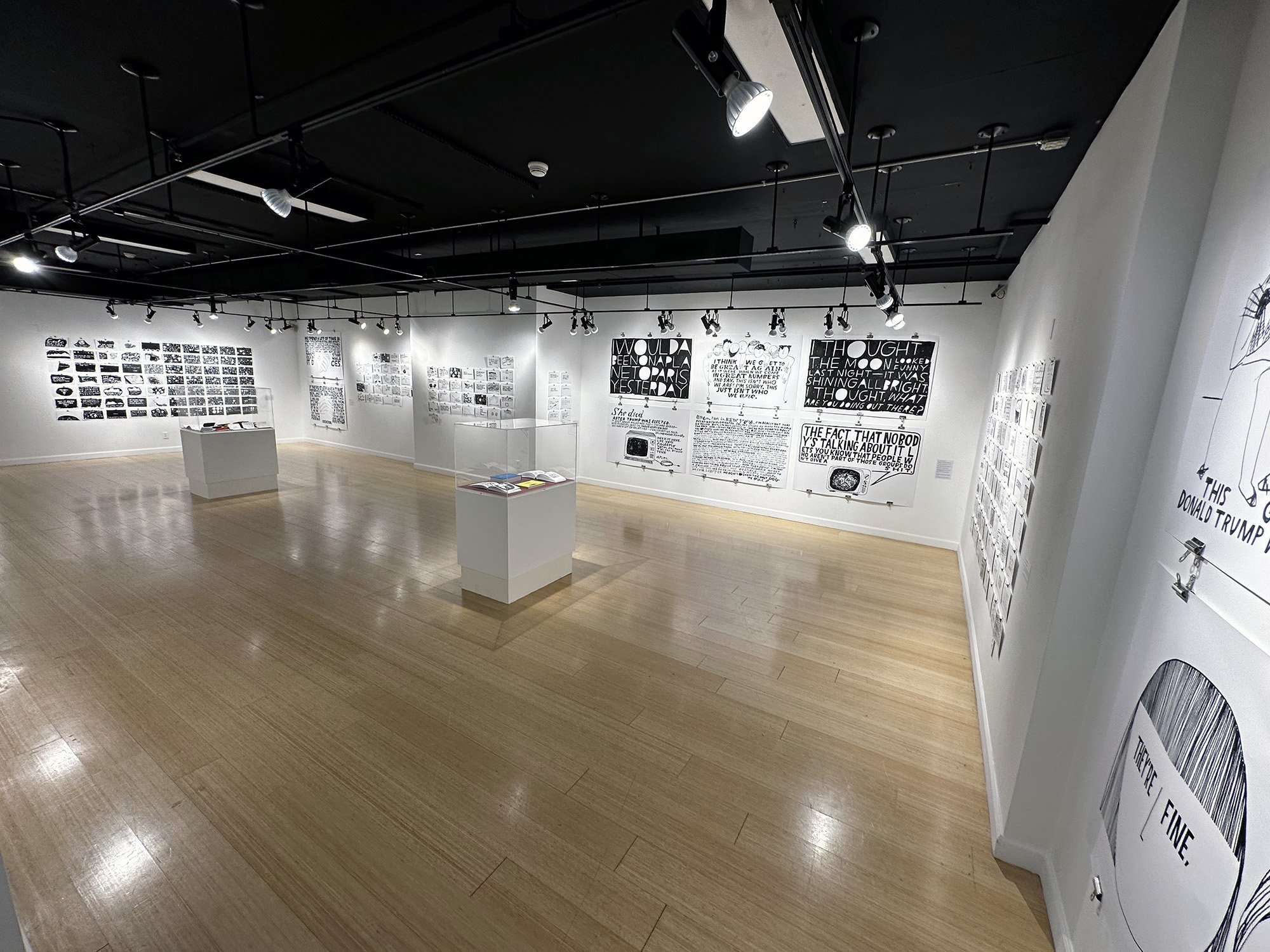
You Look Like The Right Type: 15 Years is an 2-2023 exhibition of large and small drawings, generated daily since 2012, and edited into conversation installations between strangers who have never met exchanging words on a topic not yet discussed. This exhibition contains drawings, artist’s books, and sketchbooks containing a record of daily, overheard quotes. The images in this slide show were photographed at McMaster Gallery, within the School of Visual Art and Design, at the University of South Carolina, where the You Look Like The Right Type archive celebrated fifteen years on November 23, 2023. This exhibit was on display from October 26, 2023 through November 30, 2023.
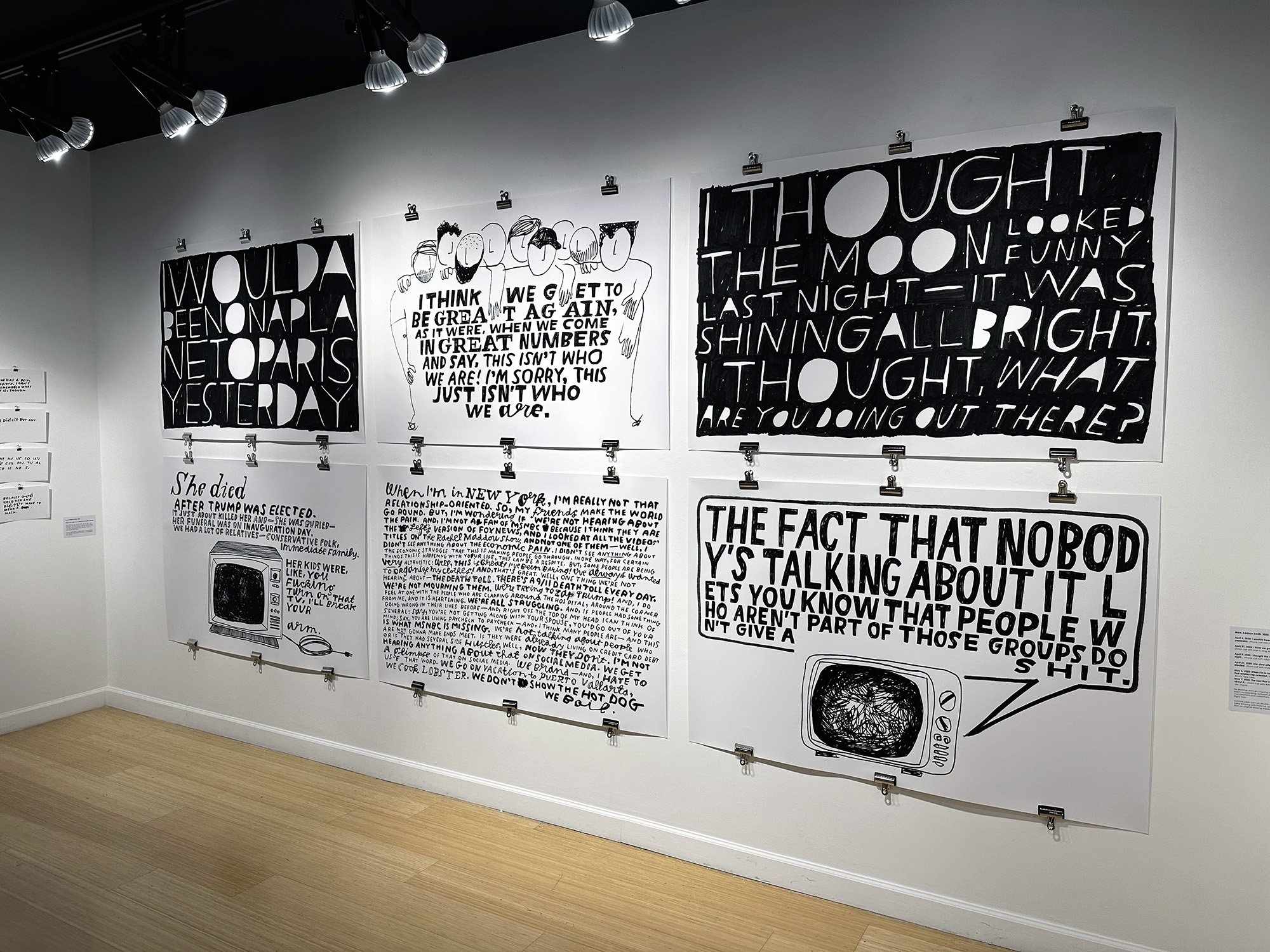
During the early months of the COVID-19 pandemic, I invited strangers to hold virtual conversations with me so I could maintain my overheard-conversation archive of daily drawings during the lockdown. Each stranger’s words were transcribed into visual, typographic essays of how they were grappling with the pandemic. I enlarged the original 7x11-inch small drawings into 40x60-inch inkjet prints to highlight voices that warranted a louder platform. Among the voices featured here are drag artist Lady Bunny (bottom, center), HIV/AIDS activist and writer Mark S. King (bottom left and top center), professor Ashley Hairston Doughty (bottom right), photographer Holly White (top left) and nursing home patient Julia Gernand (top right).
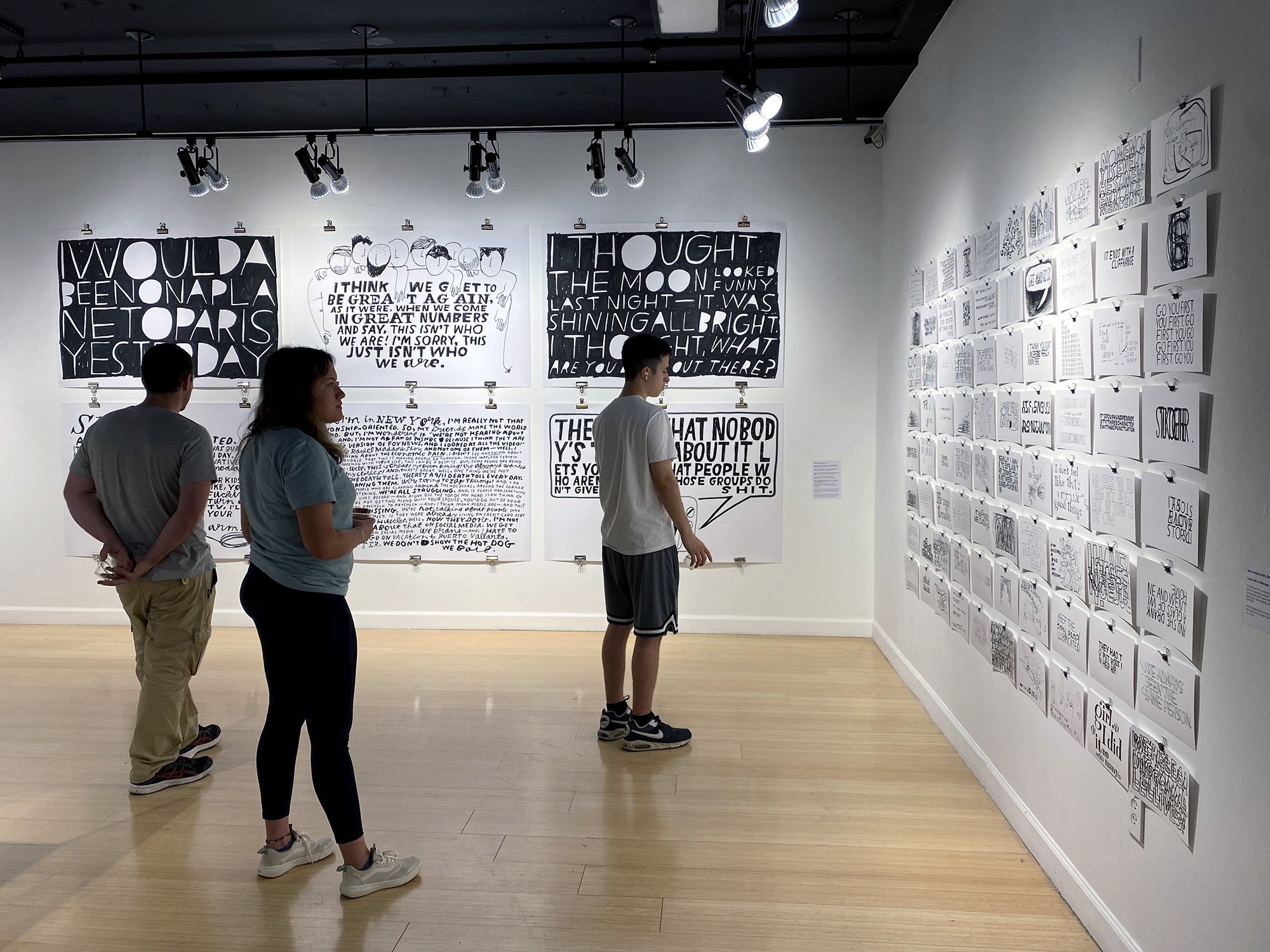
Two conversation installations met viewers at the entrance: the installation of large-format inkjet prints, with quotes reflecting the early months of the COVID-19 lockdown, and a wall of eighty 7x11-inch drawings, edited around the theme of verbal and visual suspense and titled It Ends With A Cliffhanger (2023).
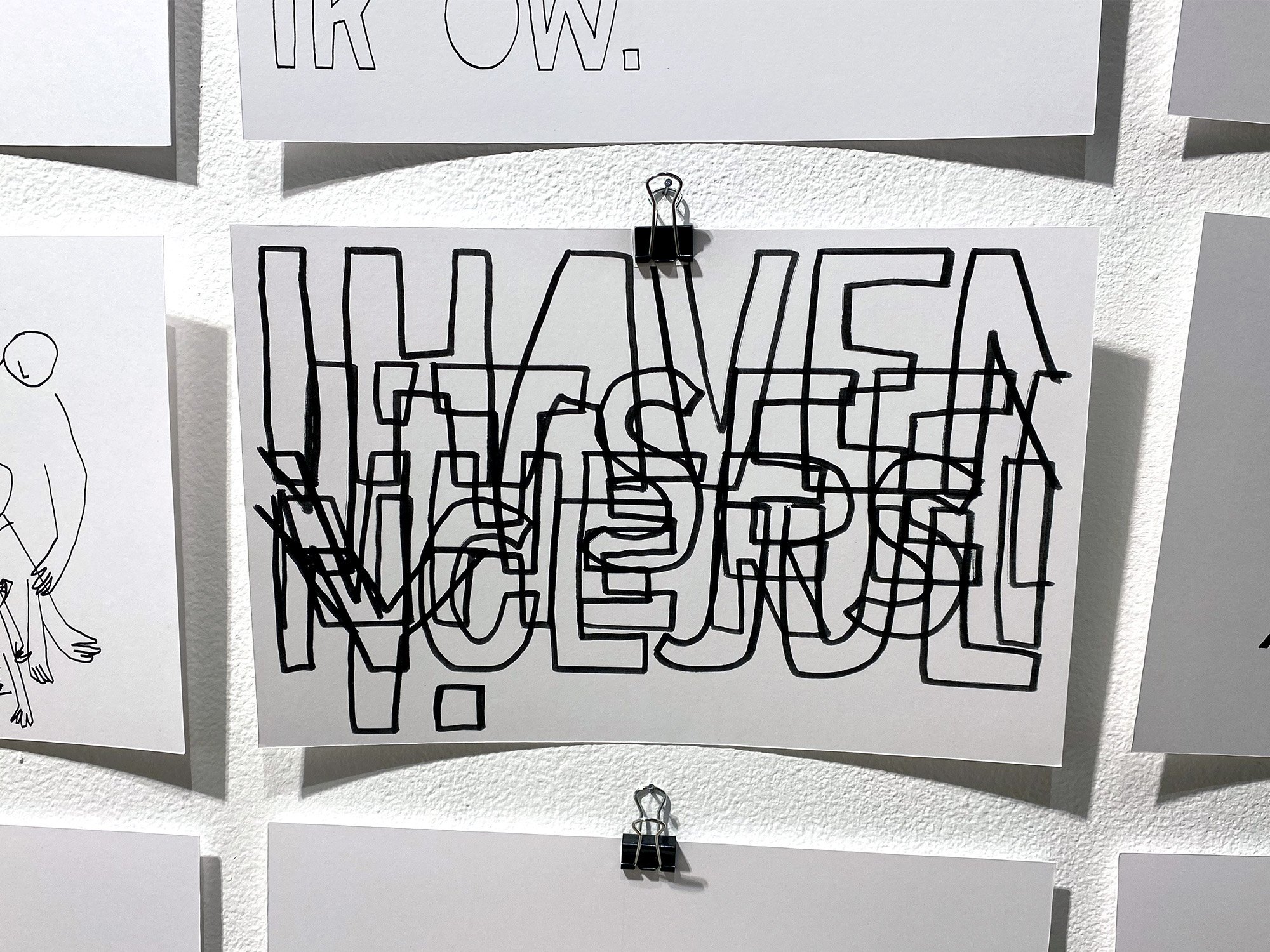
India ink pen on Bristol board, overheard and drawn on 10/24/16. The drawings is this conversation cluster, titled It Ends With A Cliffhanger, feature typographic styles and themes that hopefully aren’t instantly recognizable to the viewer, inviting a degree of anticipation or suspense in the visual reading.
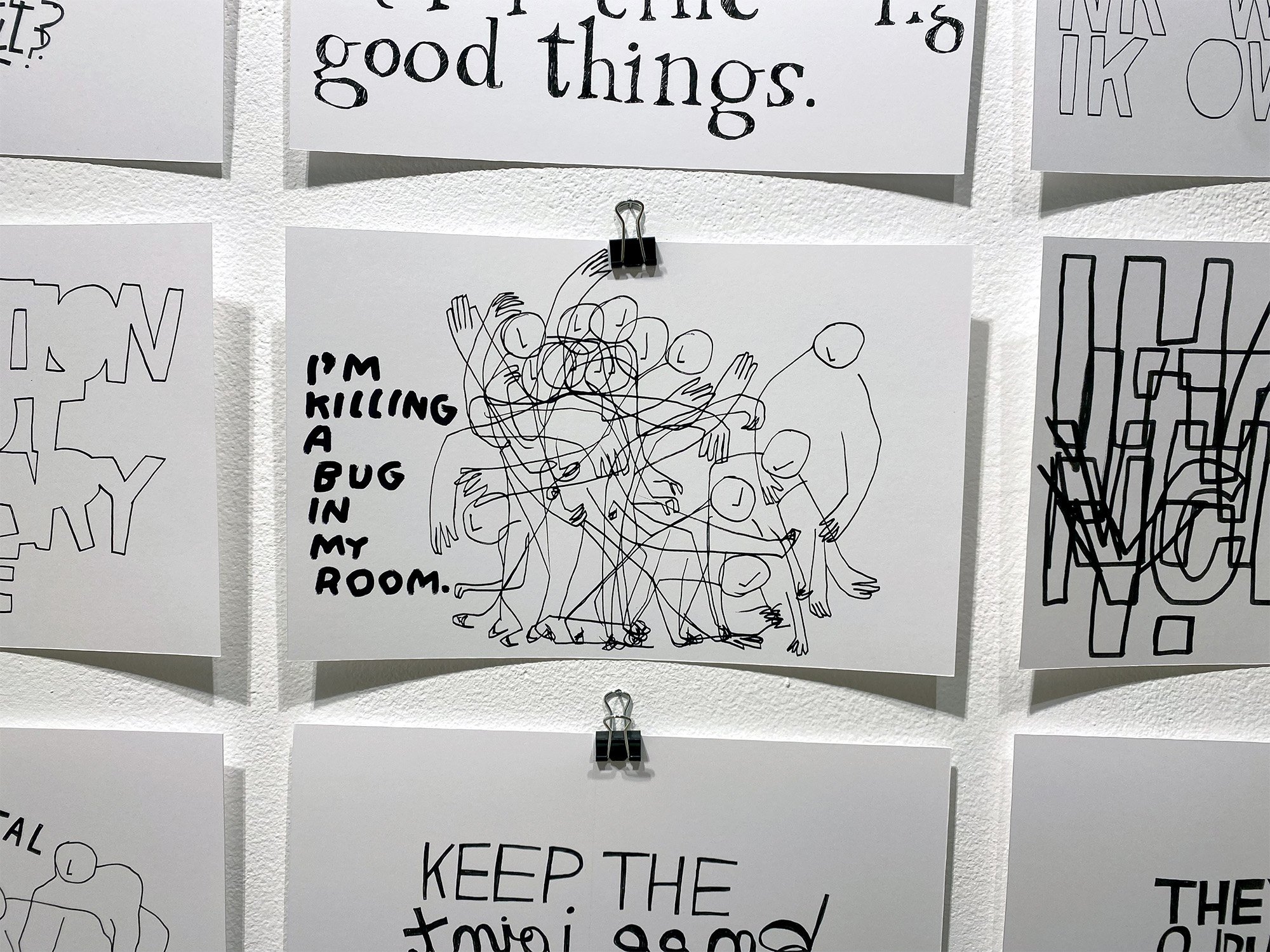
India ink pen on Bristol board, overheard and drawn on 8/6/20. Here, the figure resembles some of the letterforms in this edited set.
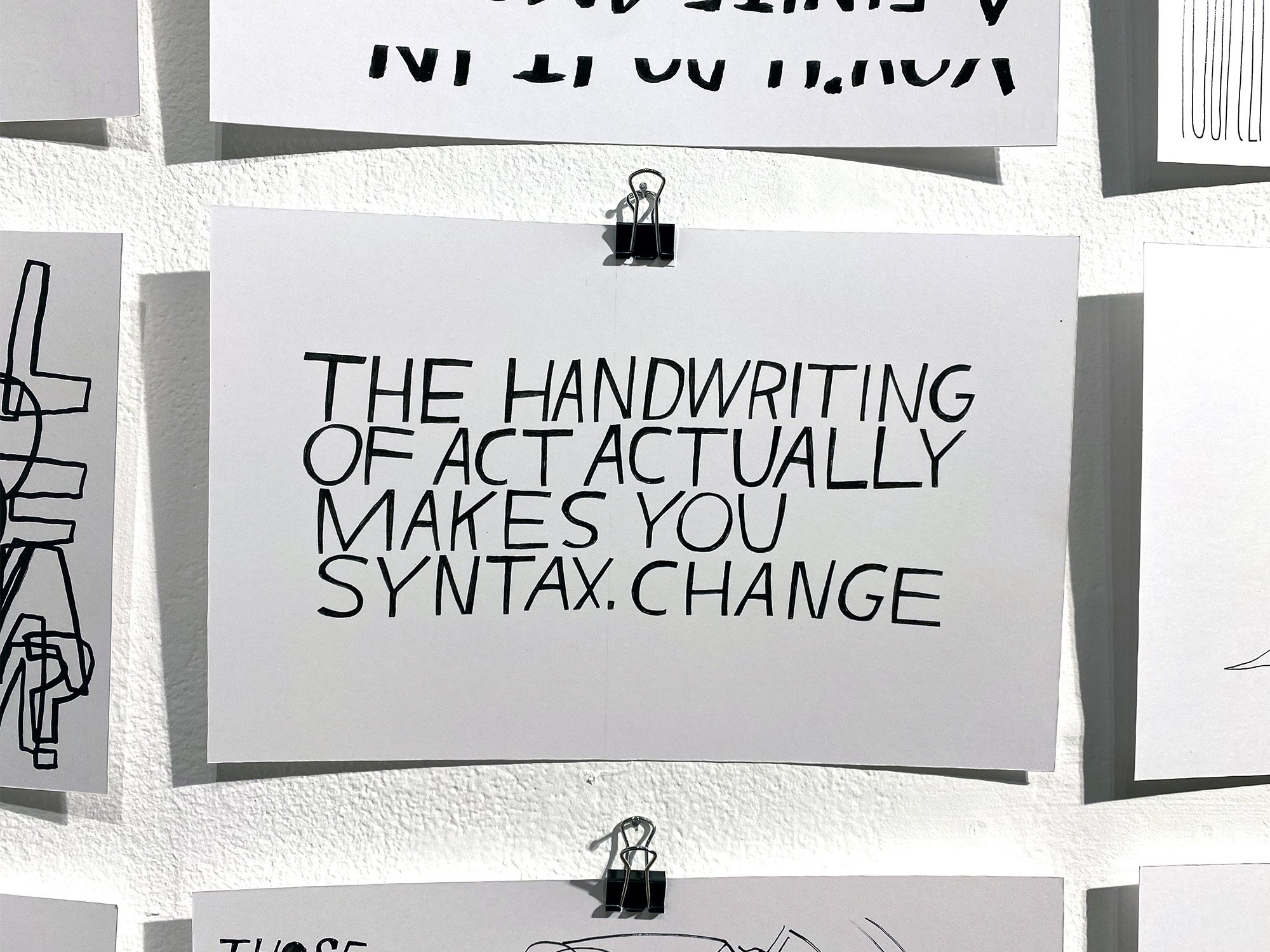
India ink pen on Bristol board, overheard and drawn on 3/7/15. Shifting grammar and syntax are elements that I love to play around with in my drawings and bookworks, so this quote invited that play.
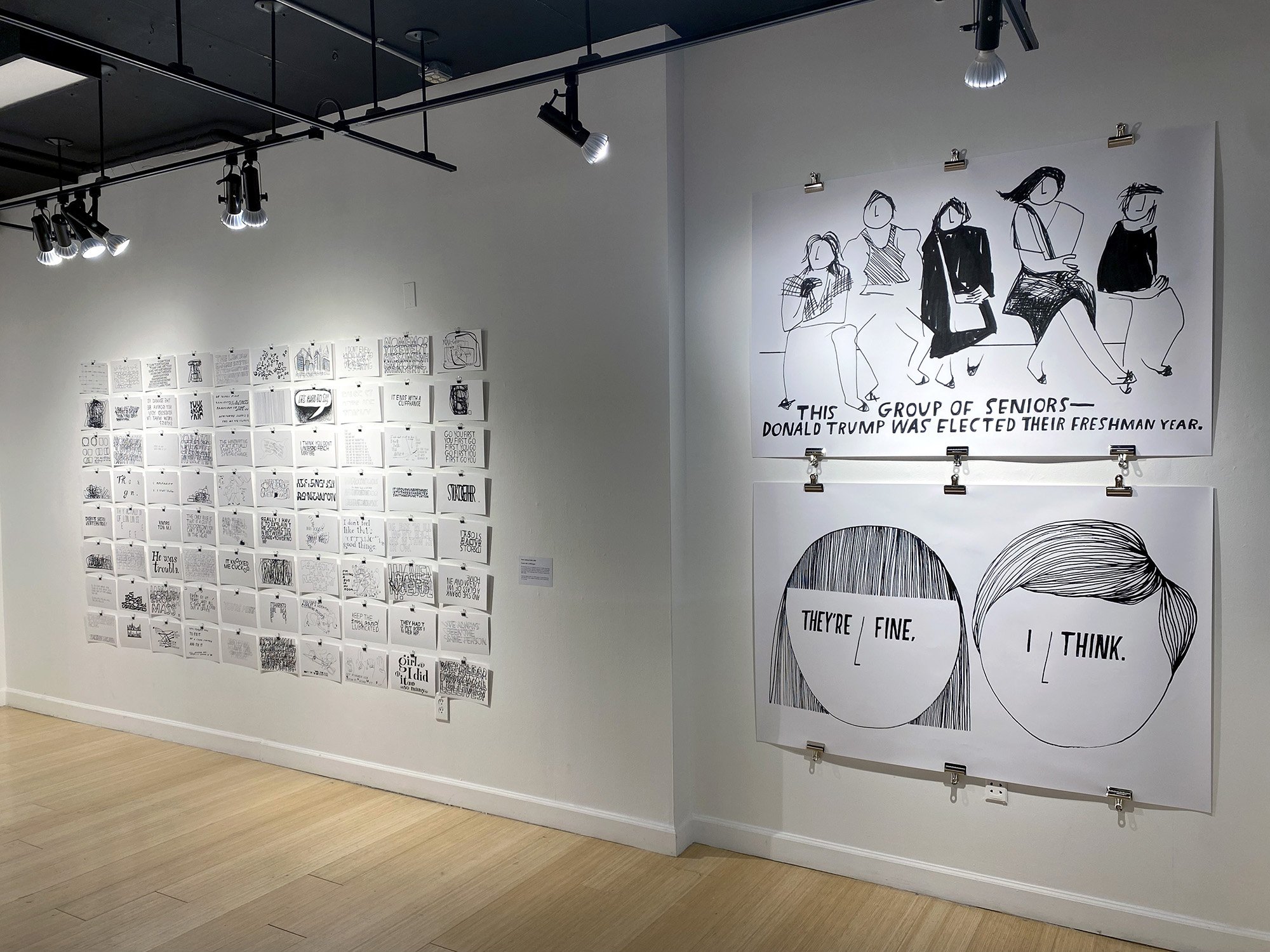
Two installations appear the gallery entrance: It Ends With A Cliffhanger (2023) consisting of 80 drawings in verbal and visual suspense, and a grouping of two more 40x60-inch prints overheard during the COVID-19 lockdown.
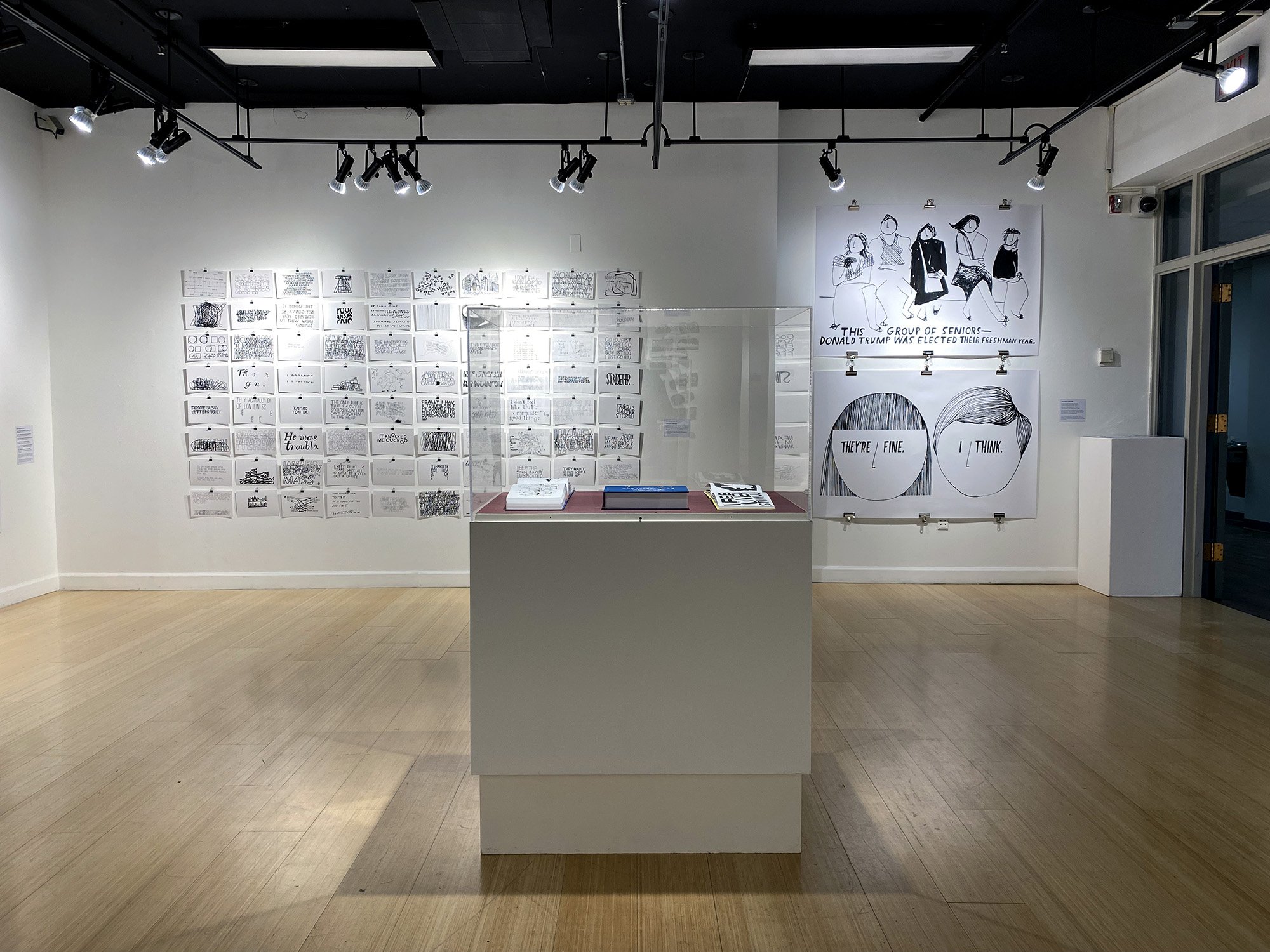
A centerpiece vitrine contains artist’s books in which drawings from the You Look Like The Right Type archive of overheard conversations combine into larger, bound narratives.
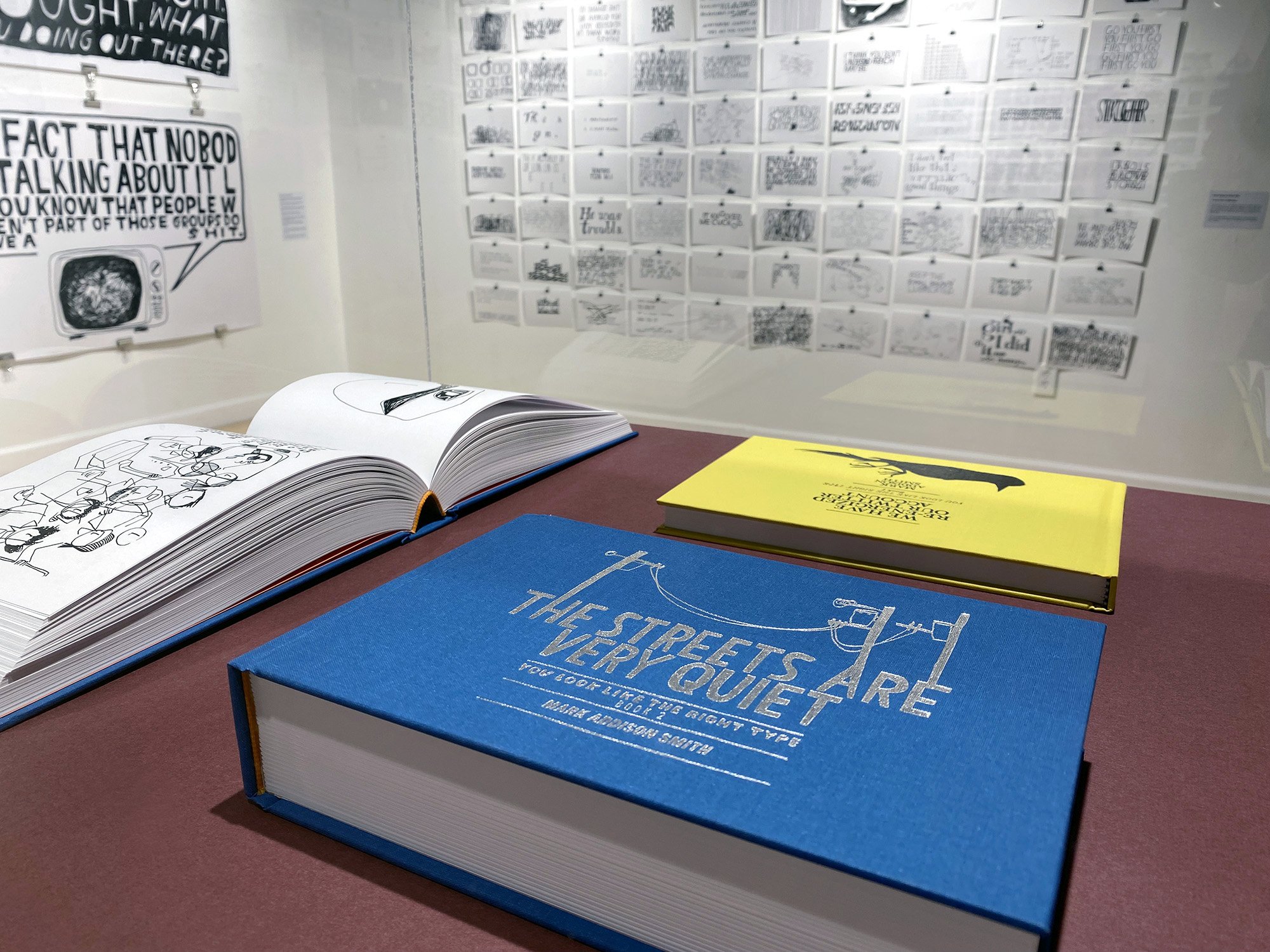
The blue artist’s book is titled The Streets Are Very Quiet (2022), in which 40 visual essays from strangers are edited together into a larger narrative about the early months of the COVID-19 lockdown. I invited strangers to hold virtual conversations with me during the pandemic in order to keep my daily drawing practice alive, and this artist’s book—funded with a grant from the Research Foundation of the City of New York—features over 400 of those drawings generated during March–July 2020. The title was spoken by an educator who lives in Winnipeg, Canada—the first virtual conversation I held to kick off this new series of pandemic drawings. Design critic Steven Heller featured the pandemic drawings twice through interviews in PRINT Magazine: once in 2020 while I was generating the pandemic drawings and again in 2022 when I completed this artist’s book.
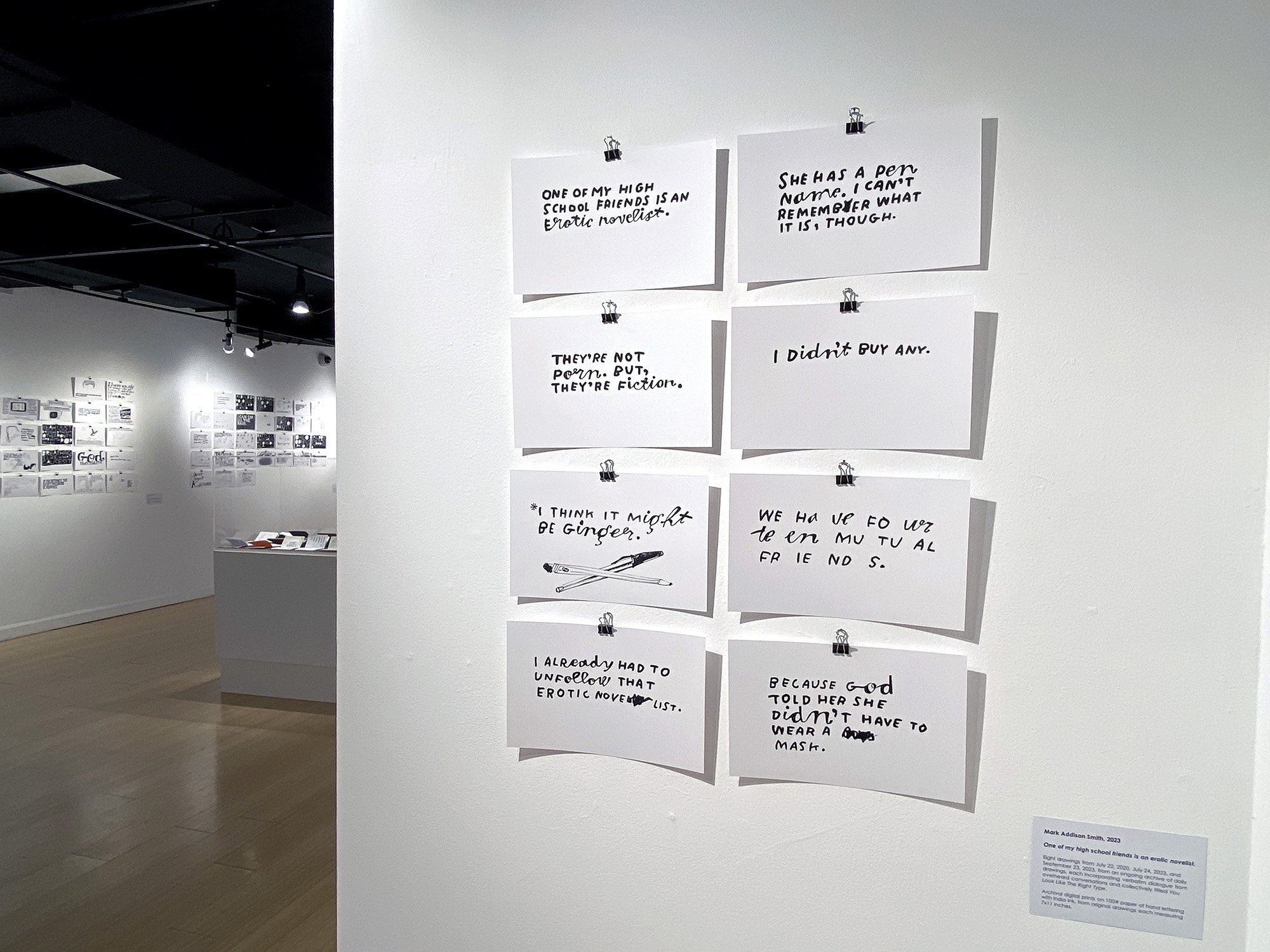
A set of eight drawings about the same person, overheard on three different days, and using India ink pen on Bristol board. The drawings in this set were overheard and drawn on 7/22/20, 7/24/23, and 9/23/23.
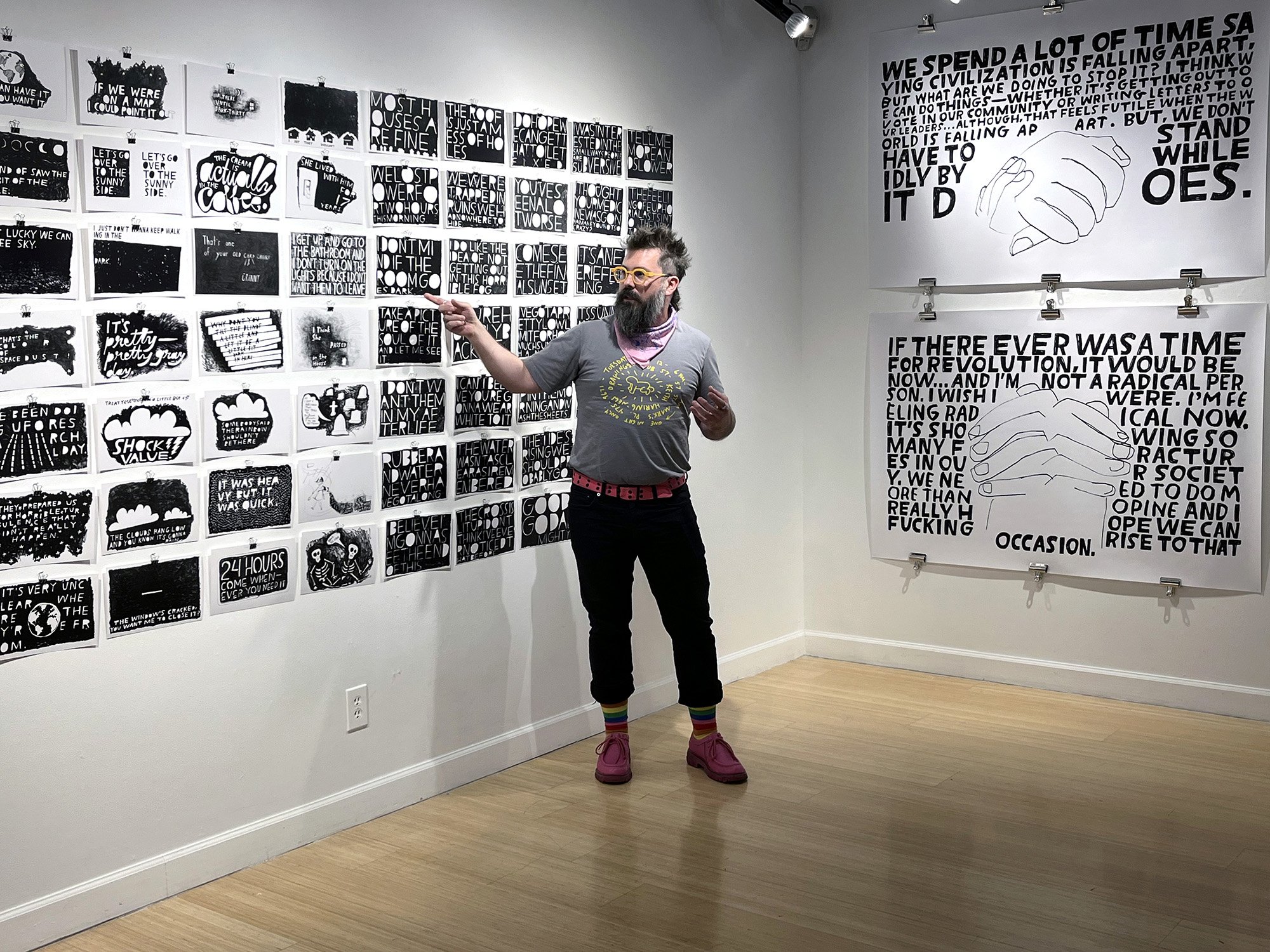
In this installation, eighty drawings and voices convey a narrative of dark moments, ranging from mental clouds (We went into a tunnel.), actual clouds (I do like the idea of not getting out in this horrible fog.), inner space (Tell me more, and slower.), outer space (That’s the color of space dust!), being lost (Anyone here?), being found (If we were on a map I could point it out.), life and death (I think she passed in the house.), life after death (I don’t want them in my afterlife.), physical appearances (I can’t believe you’re gonna wear white to it.), and spiritual appearances (Take a picture of the soul of it and let me see it.).
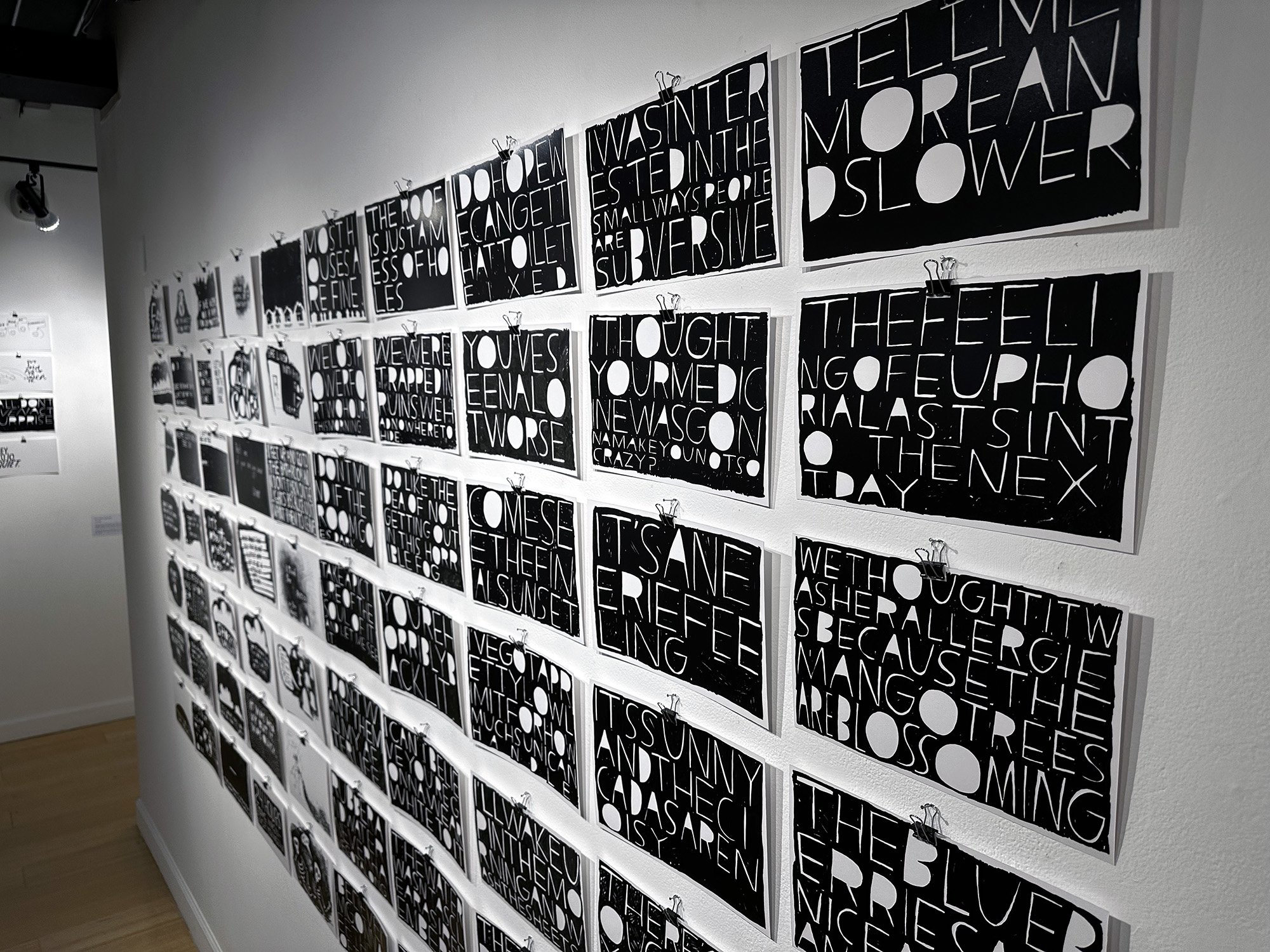
Detail shot of I don’t mind if the room goes dark., a conversation cluster of eighty drawings that deal with conceptual themes of darkness. The knock-out lettering (allowing the white from the paper to reveal the letterforms) was a style that I frequently used during the pandemic, and I felt that it gave a film noir tone to the dialogue.
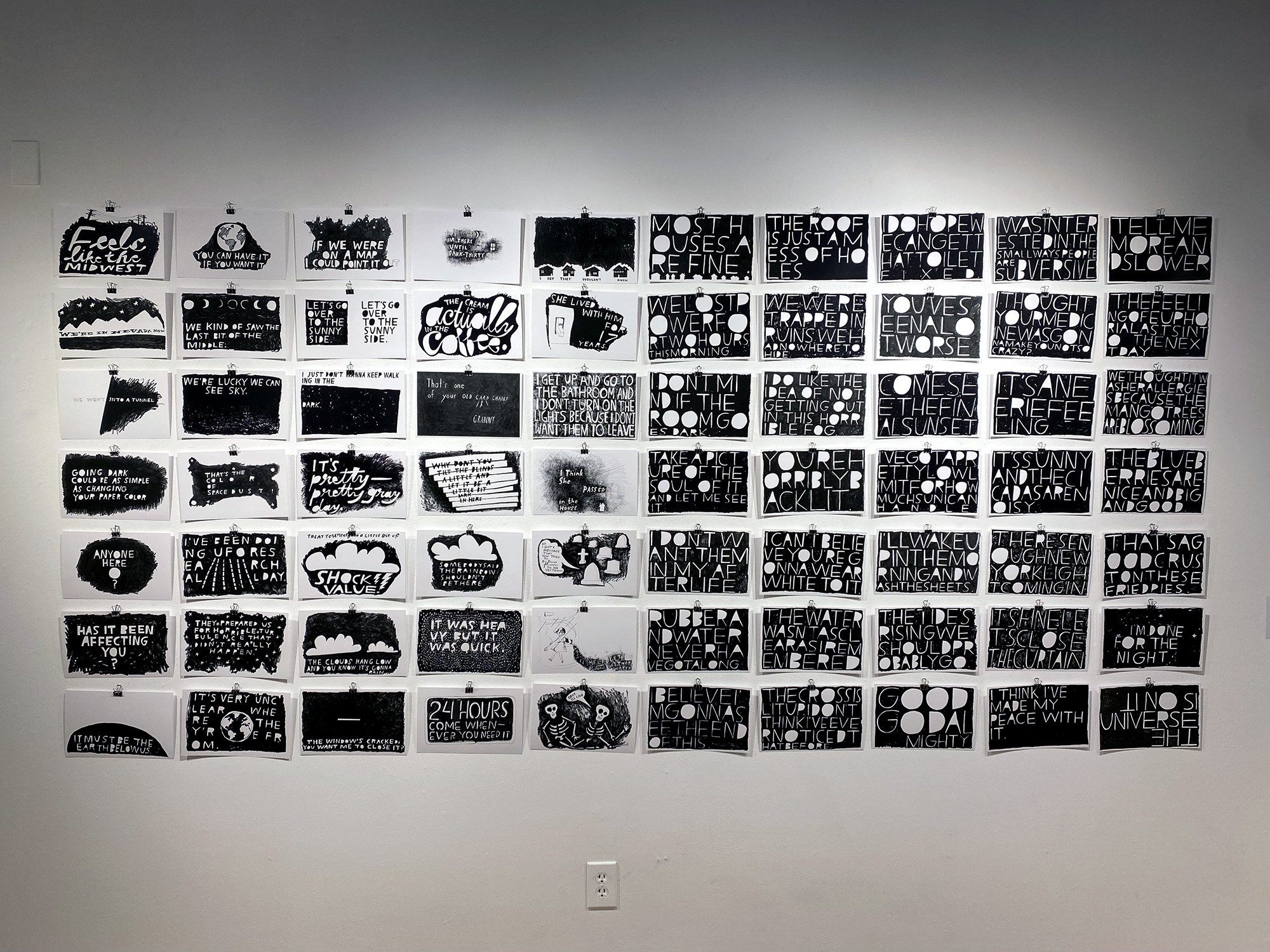
In this installation, eighty drawings and voices convey a narrative of dark moments, ranging from mental clouds (We went into a tunnel.), actual clouds (I do like the idea of not getting out in this horrible fog.), inner space (Tell me more, and slower.), outer space (That’s the color of space dust!), being lost (Anyone here?), being found (If we were on a map I could point it out.), life and death (I think she passed in the house.), life after death (I don’t want them in my afterlife.), physical appearances (I can’t believe you’re gonna wear white to it.), and spiritual appearances (Take a picture of the soul of it and let me see it.).
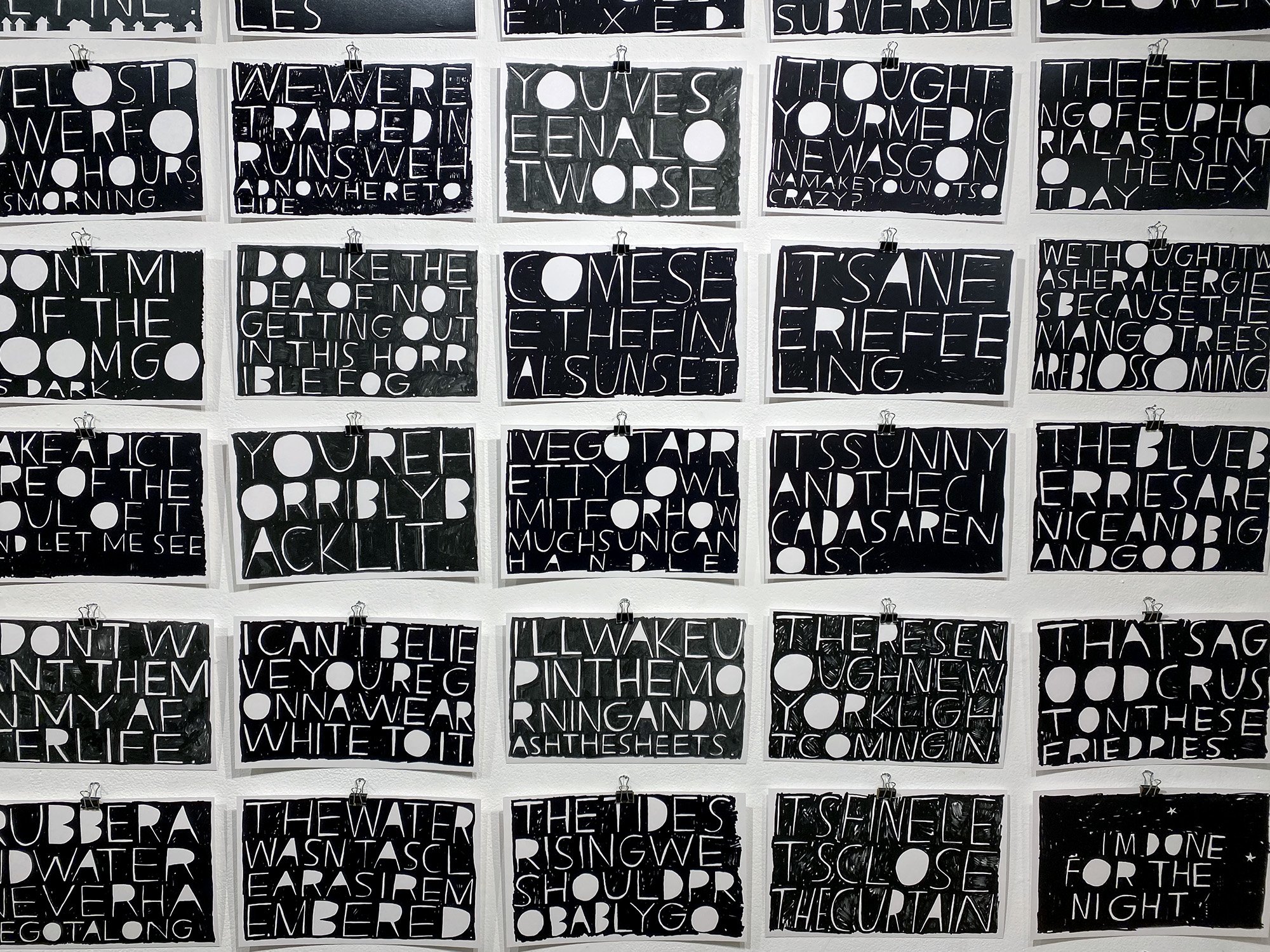
Detail shot.
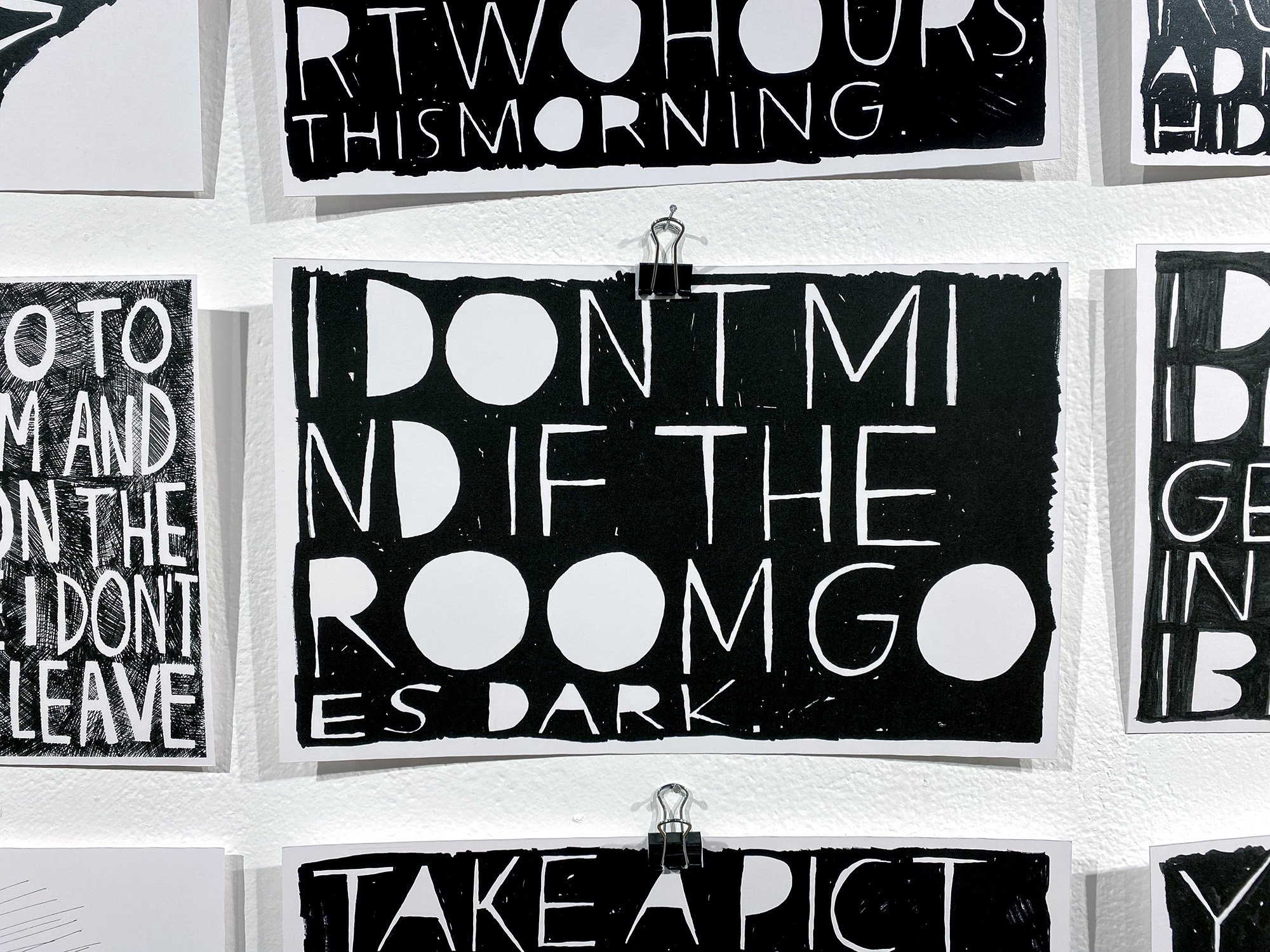
The title of each conversation cluster is derived from one drawing contained within the installation, which I call the the golden quote, containing the thematic essence of all of other quotes.
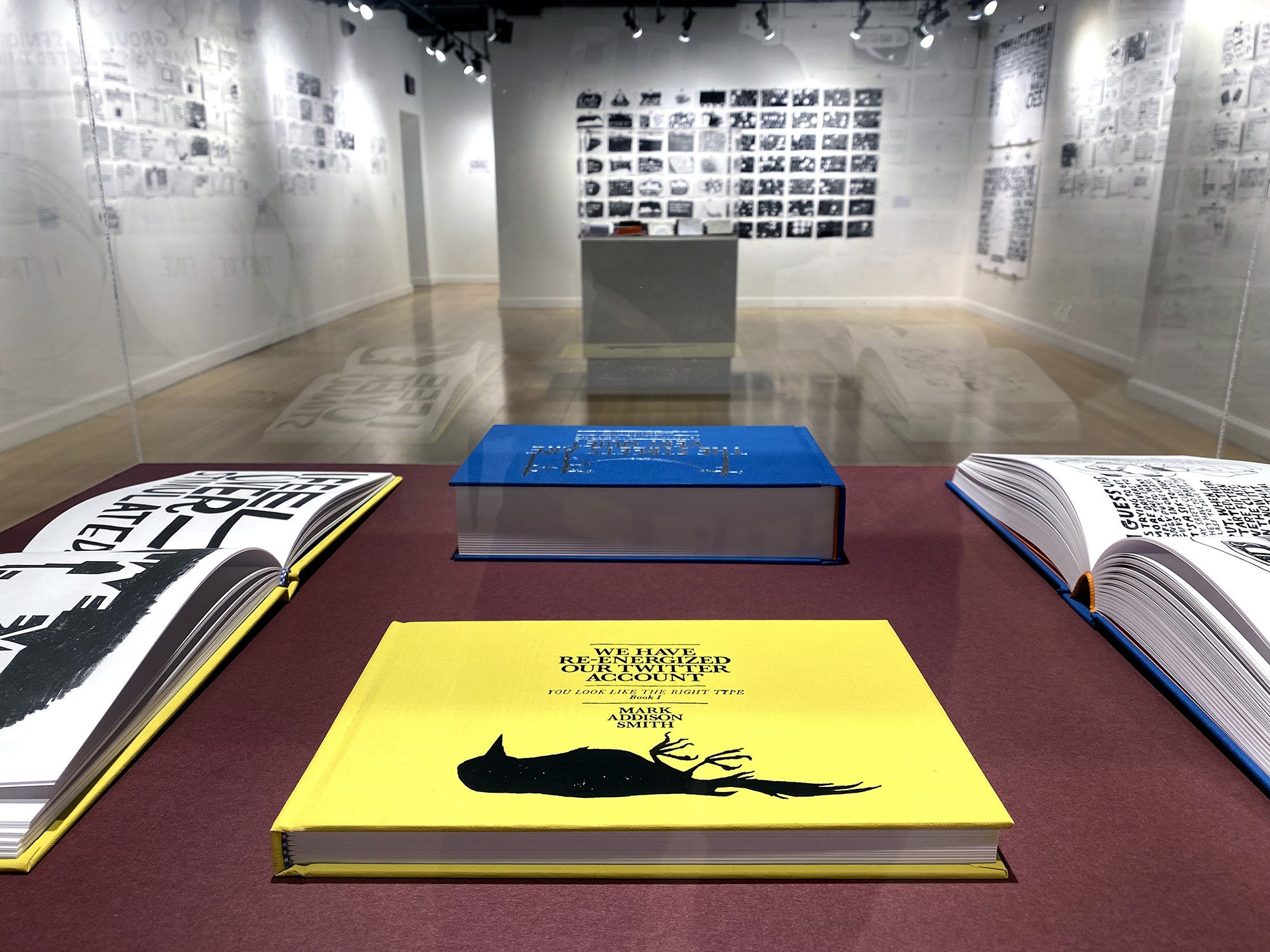
The yellow artist’s book is titled We Have Re-Energized Our Twitter Account (2018), published upon the 10-year anniversary of my You Look Like The Right Type daily drawing archive, in which 100 drawings from a decade of daily, overheard conversations are edited together into a larger narrative about Western civilization's inability to properly communicate with one another, despite our seemingly endless modes of connection.
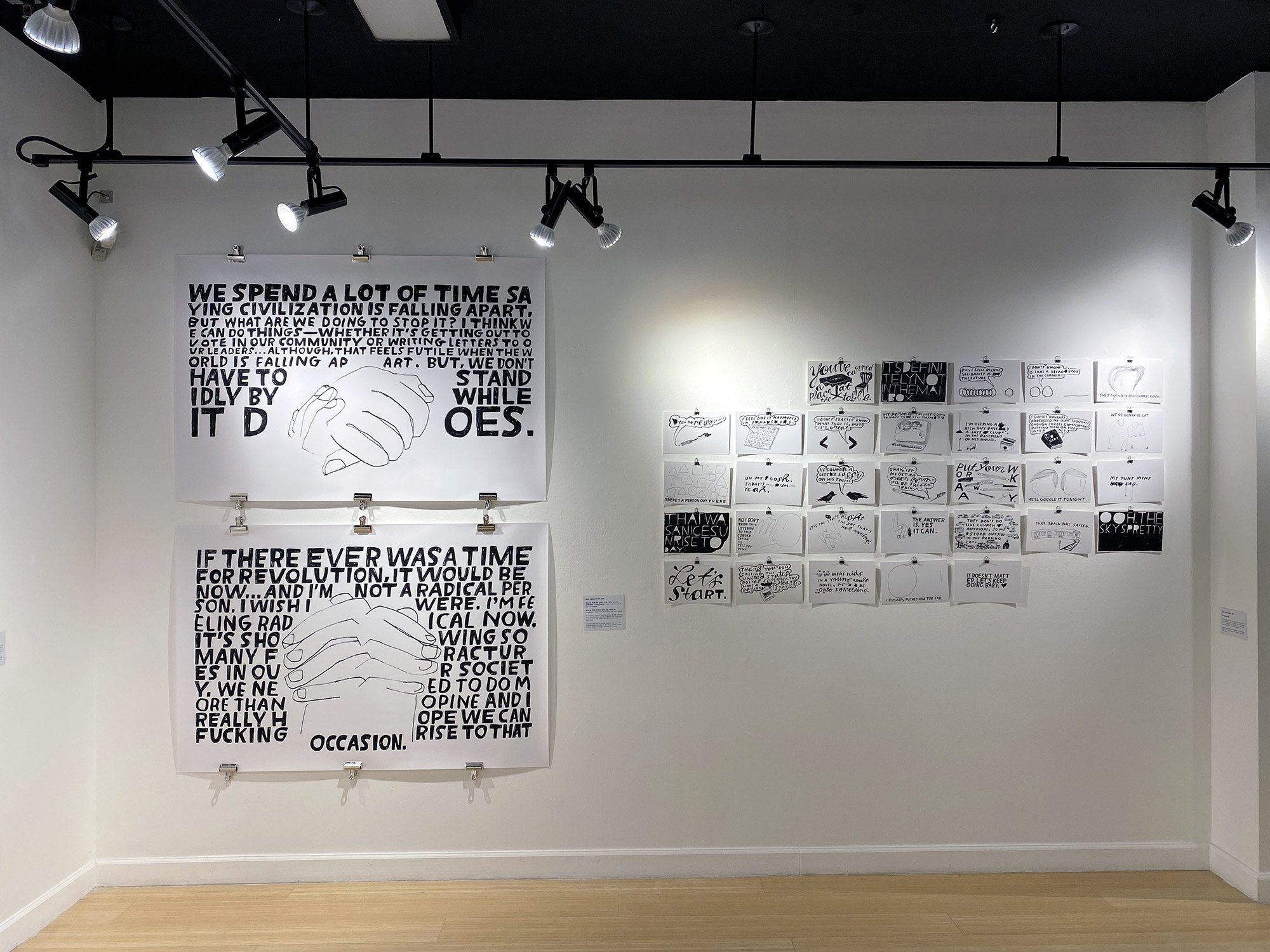
At left, two large-format prints feature quotes spoken by writer and commentator Roxane Gay from a zoom conversation we held on May 26, 2020. At right, an installation of 31 drawings from the month of December 2020 allow the linearity of time to dictate the conversation assembly, allowing viewers to look for common conversation themes and drawing styles that emerged during that time.
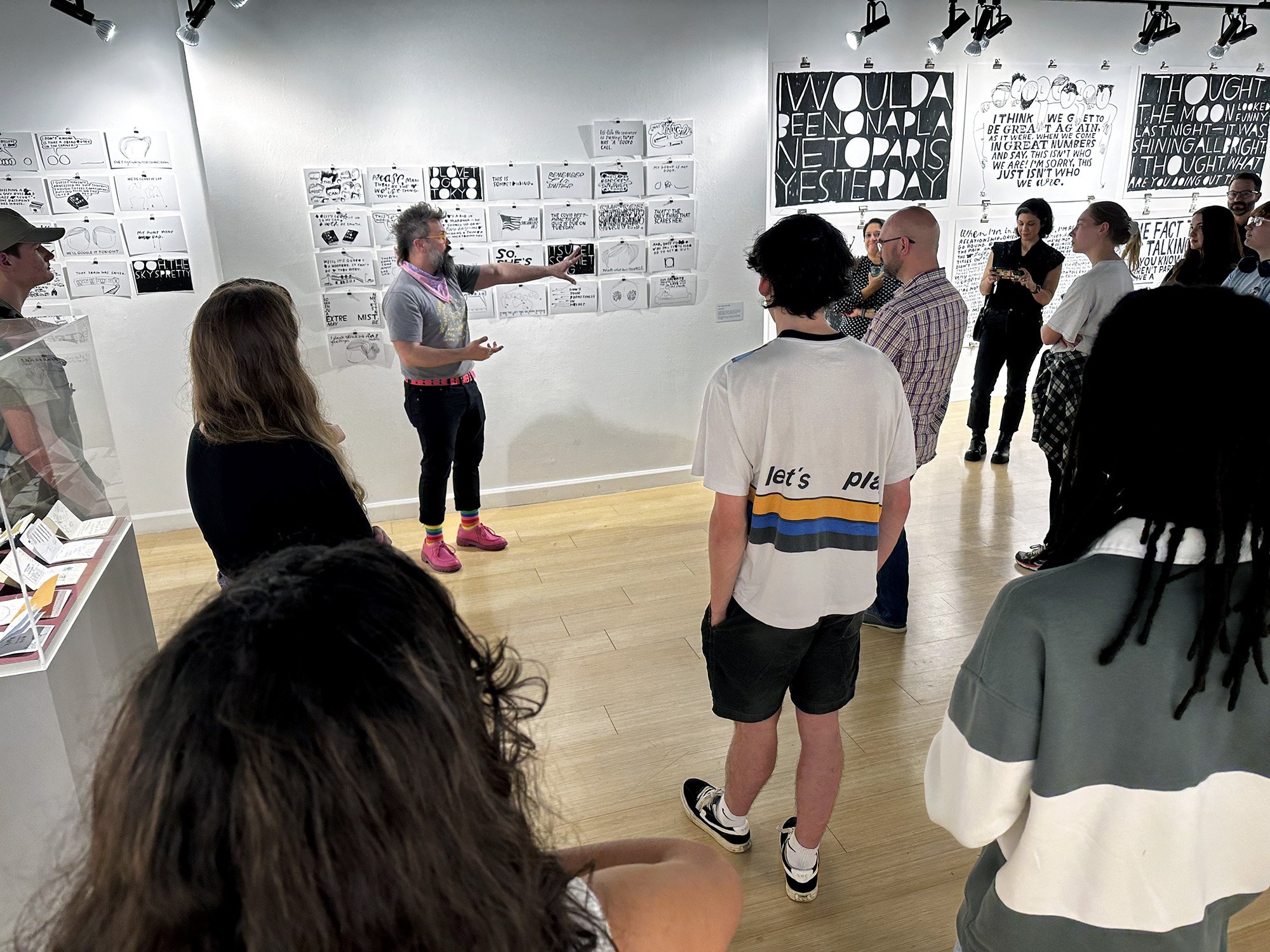
As part of my artist’s talk at McMaster Gallery, I discussed the individual drawings within January 2021, an installation of 31 drawings featuring overheard conversations from each day during that month. This installation is placed next to December 2020 in the gallery, to allow viewers to see how public opinion and conversations changed, both politically and personally, with the flip of a calendar year.
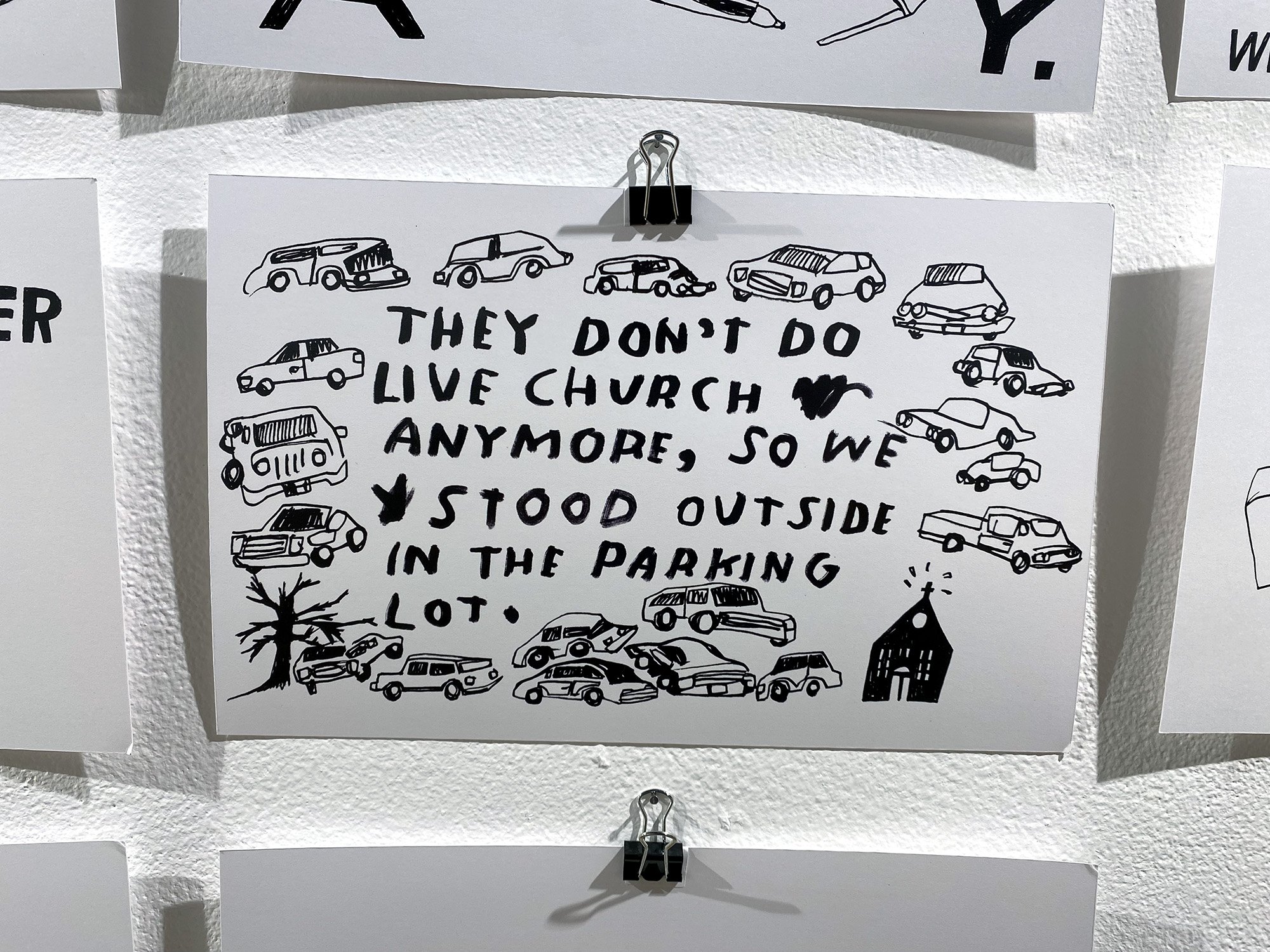
India ink pen on Bristol board, overheard and drawn on 12/24/20.
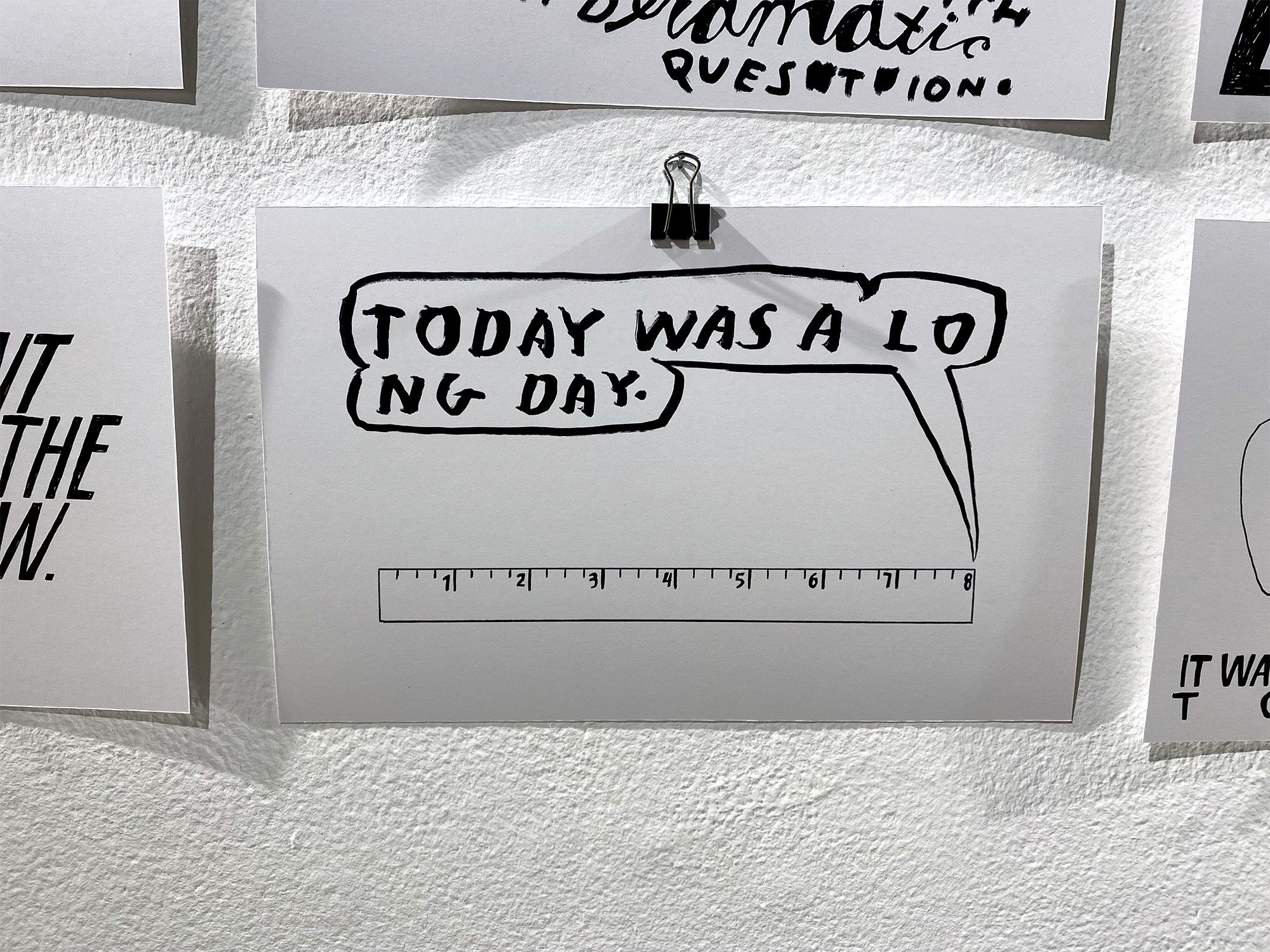
India ink pen on Bristol board, overheard and drawn on 1/26/21.
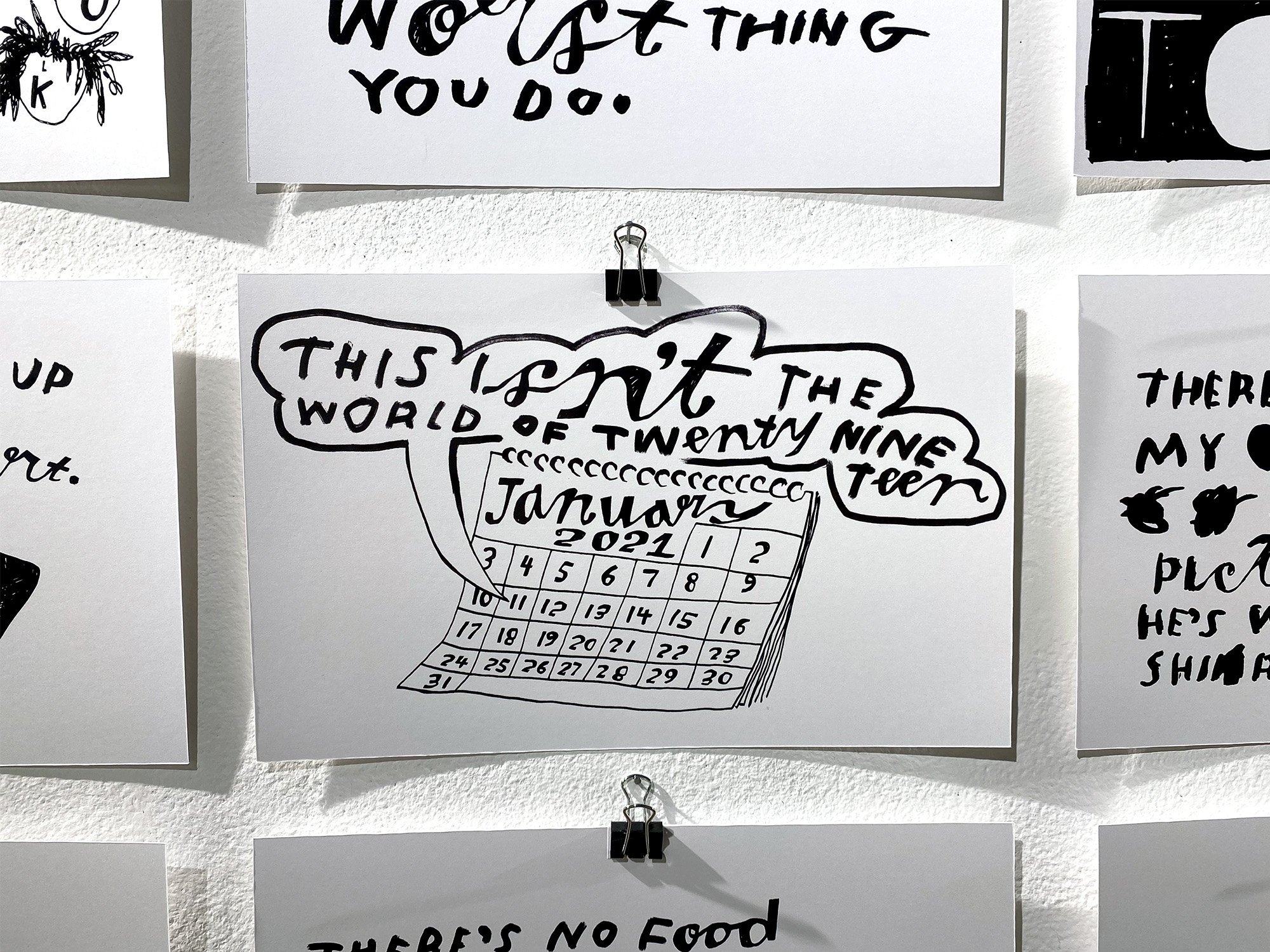
India ink pen on Bristol board, overheard and drawn on 1/11/21.
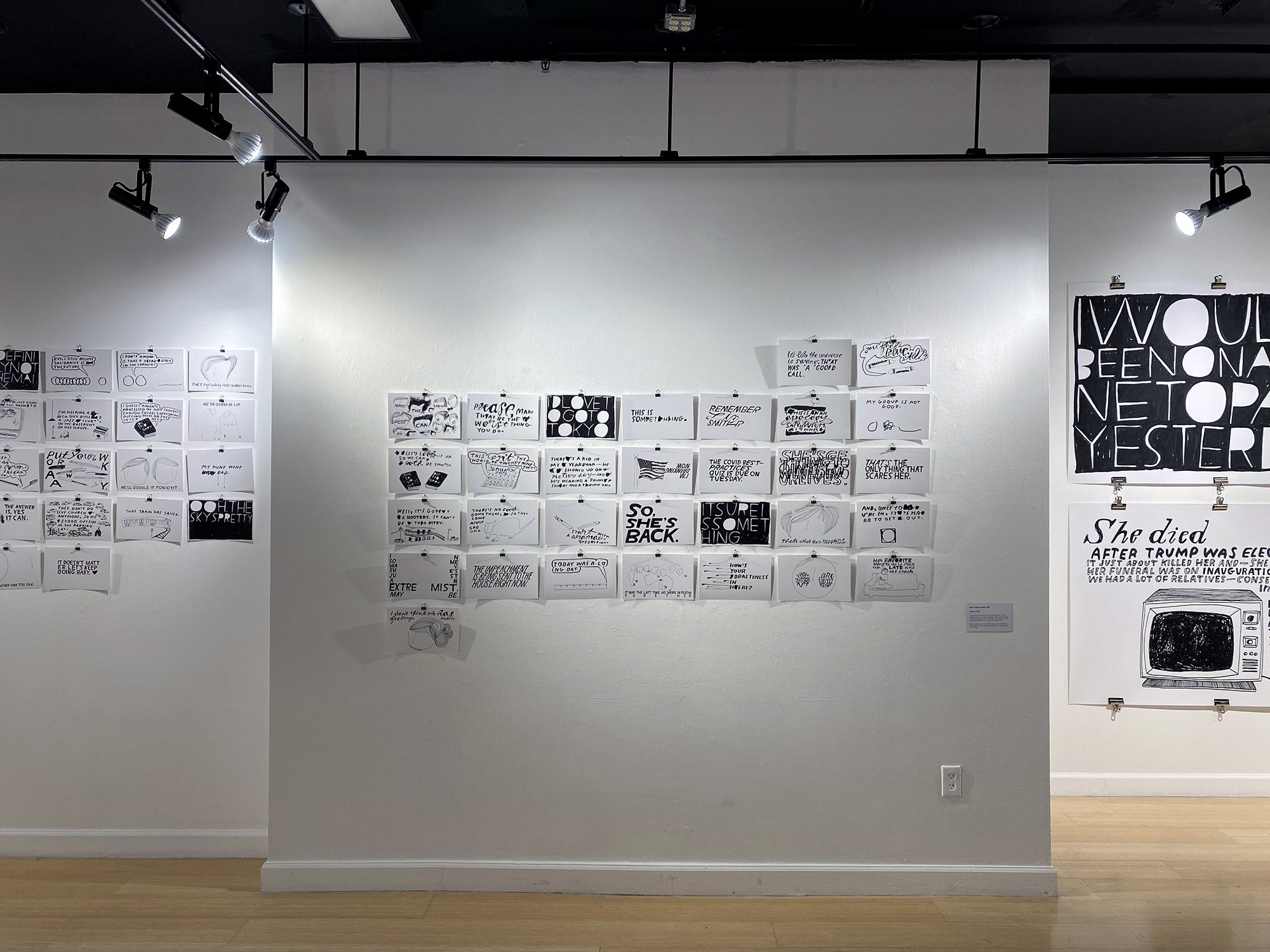
The 31 days of January 2021, featured in the center, sit next to the December 2020 drawings, cropped at left, to allow viewers to see how the world shifted (or didn’t) with the new year.
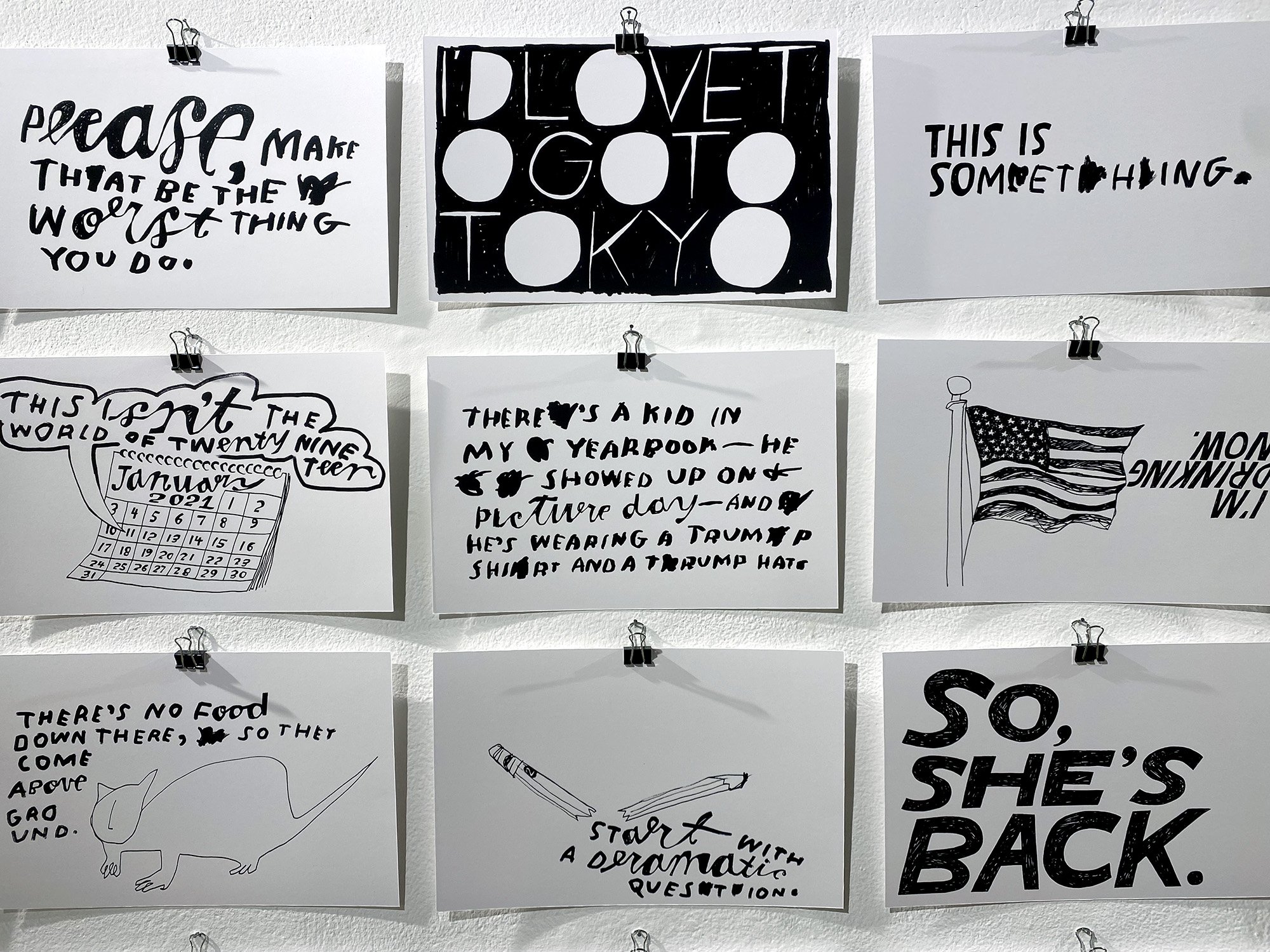
Six drawings and six overheard quotes from the January 2021 conversation cluster.
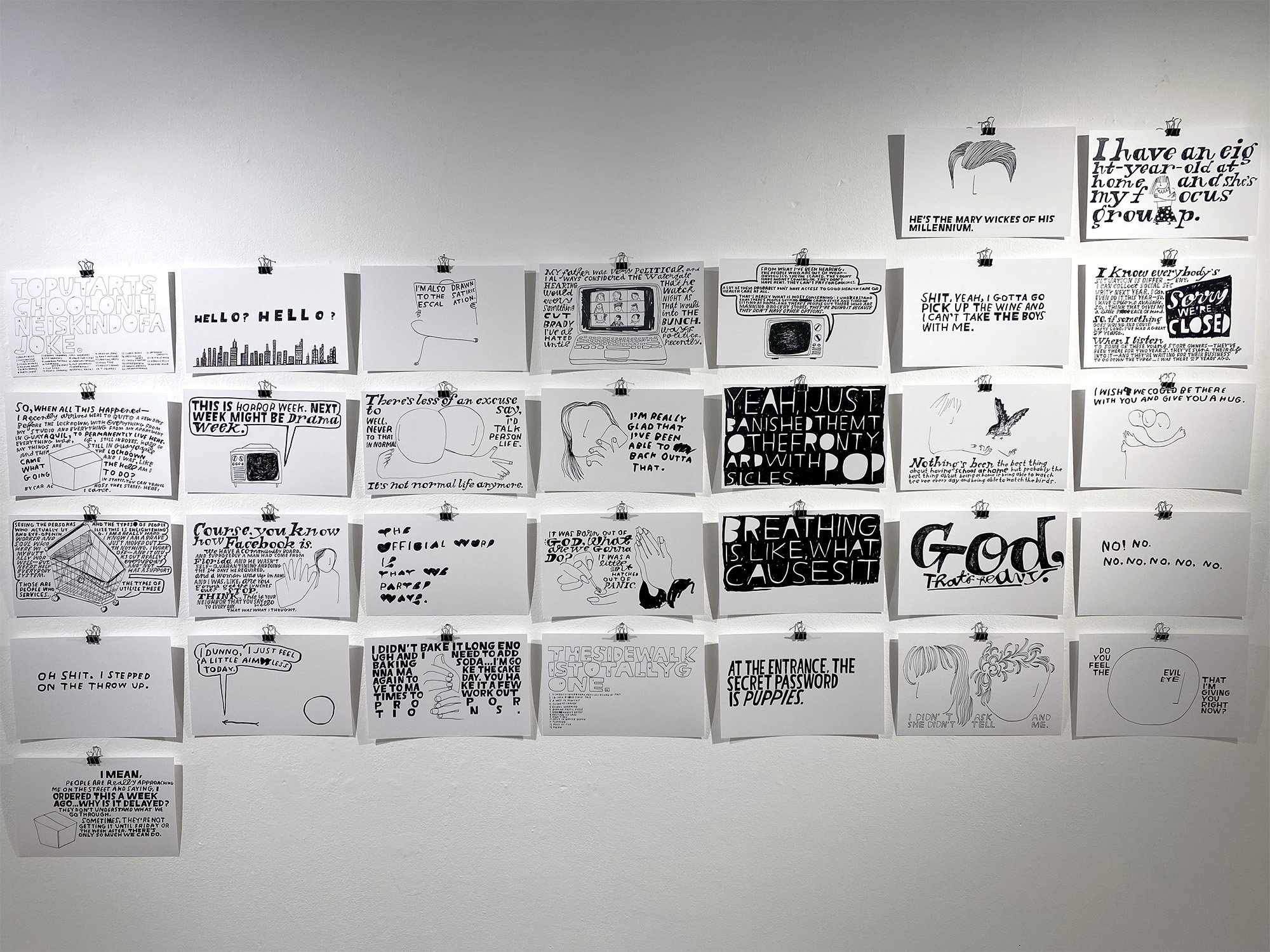
The 31 days of May 2020 share a conversation together as a page torn from a calendar.
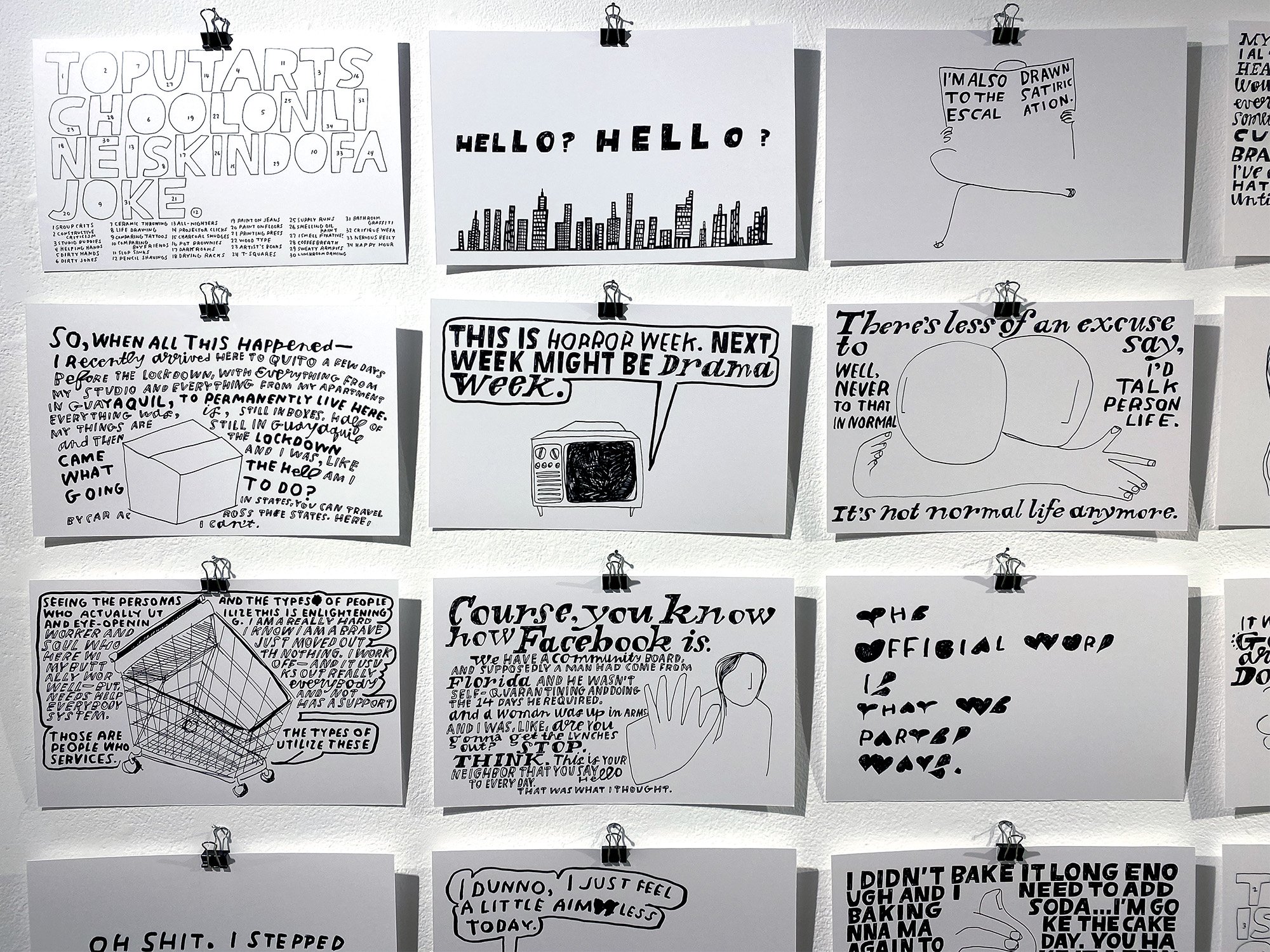
Detail shot.
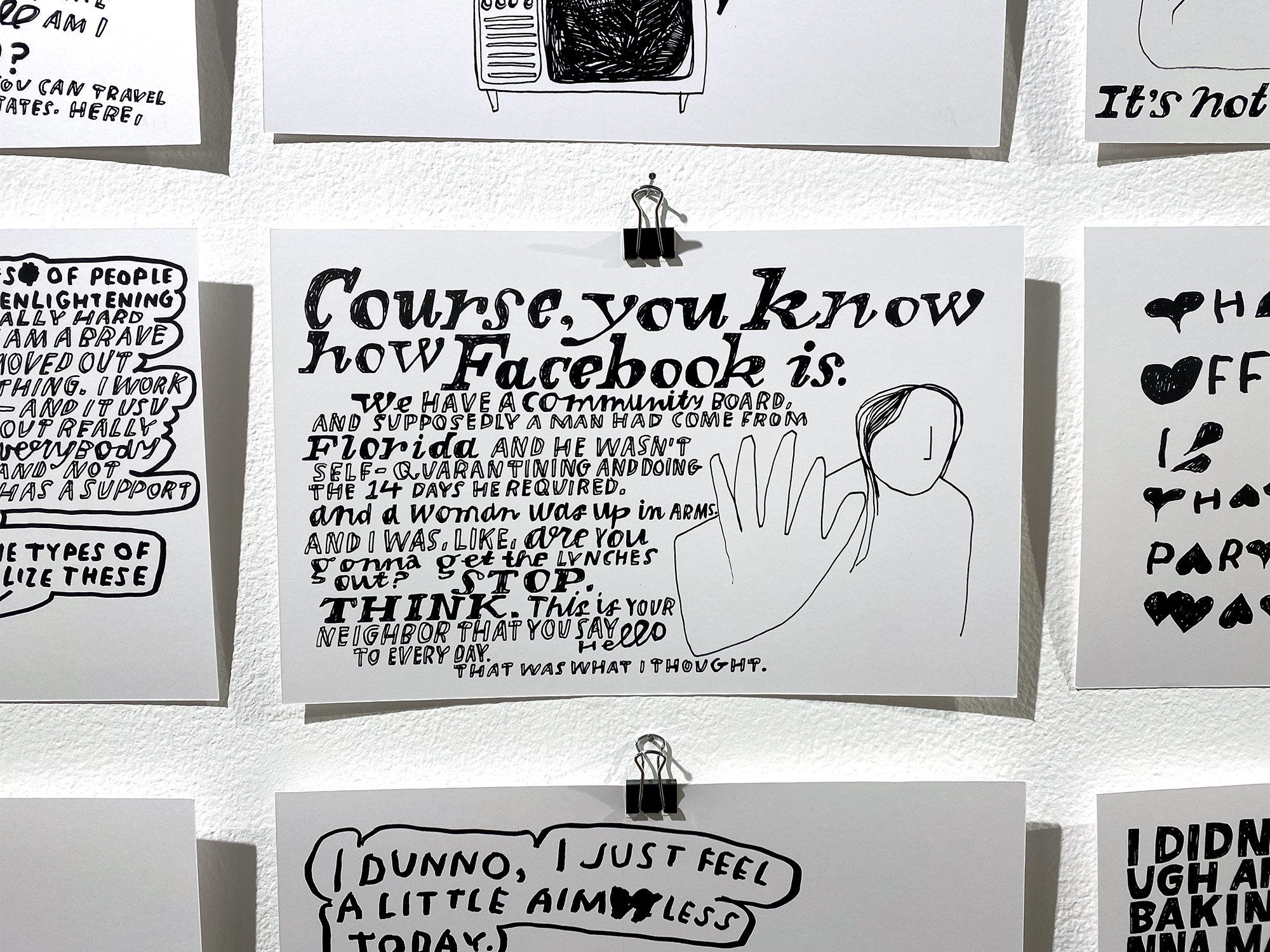
India ink pen on Bristol board, overheard and drawn on 5/18/20, from a zoom conversation held with a grocery store manager in Lubec, Maine.
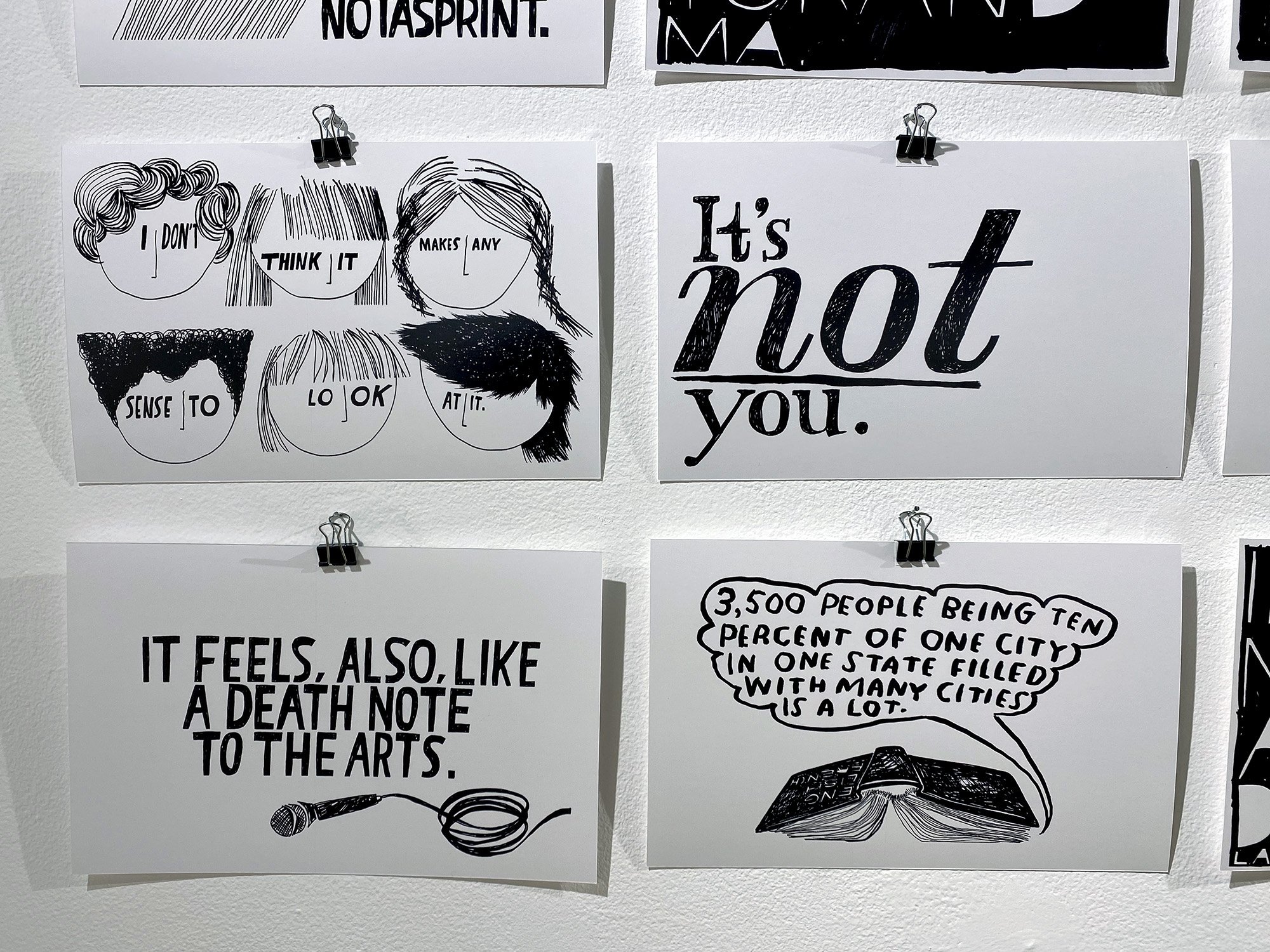
Four drawings from the March 2020 conversation installation.
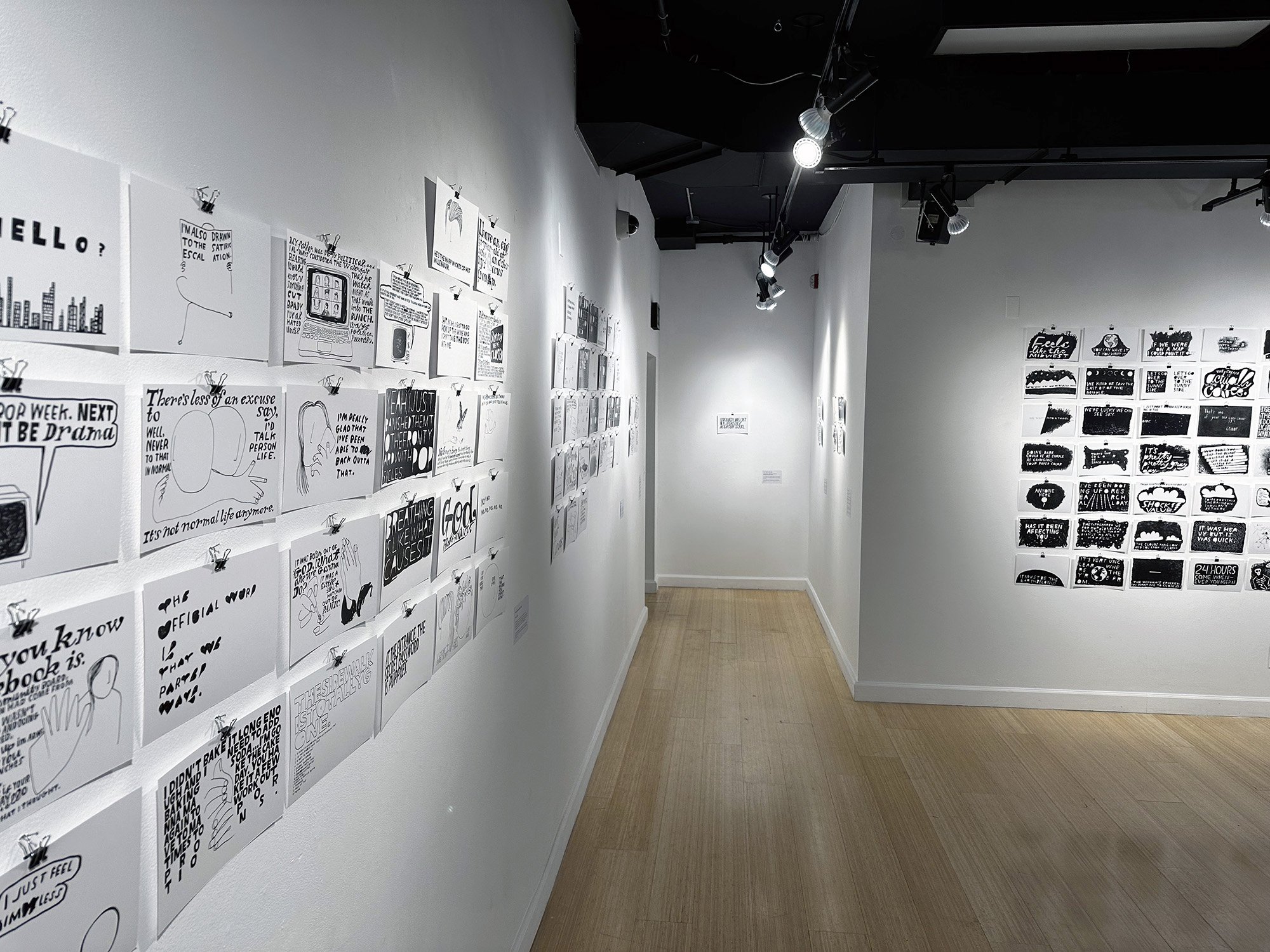
This wall contains four calendar-based conversation clusters of quotes overheard during the pandemic. During the early days of the lockdown, and before I started holding virtual conversations with strangers for textual drawing material, I would raise the windows of my apartment and hope for a stranger to walk their dog or talk on their cell phone within ear shot below my open window.
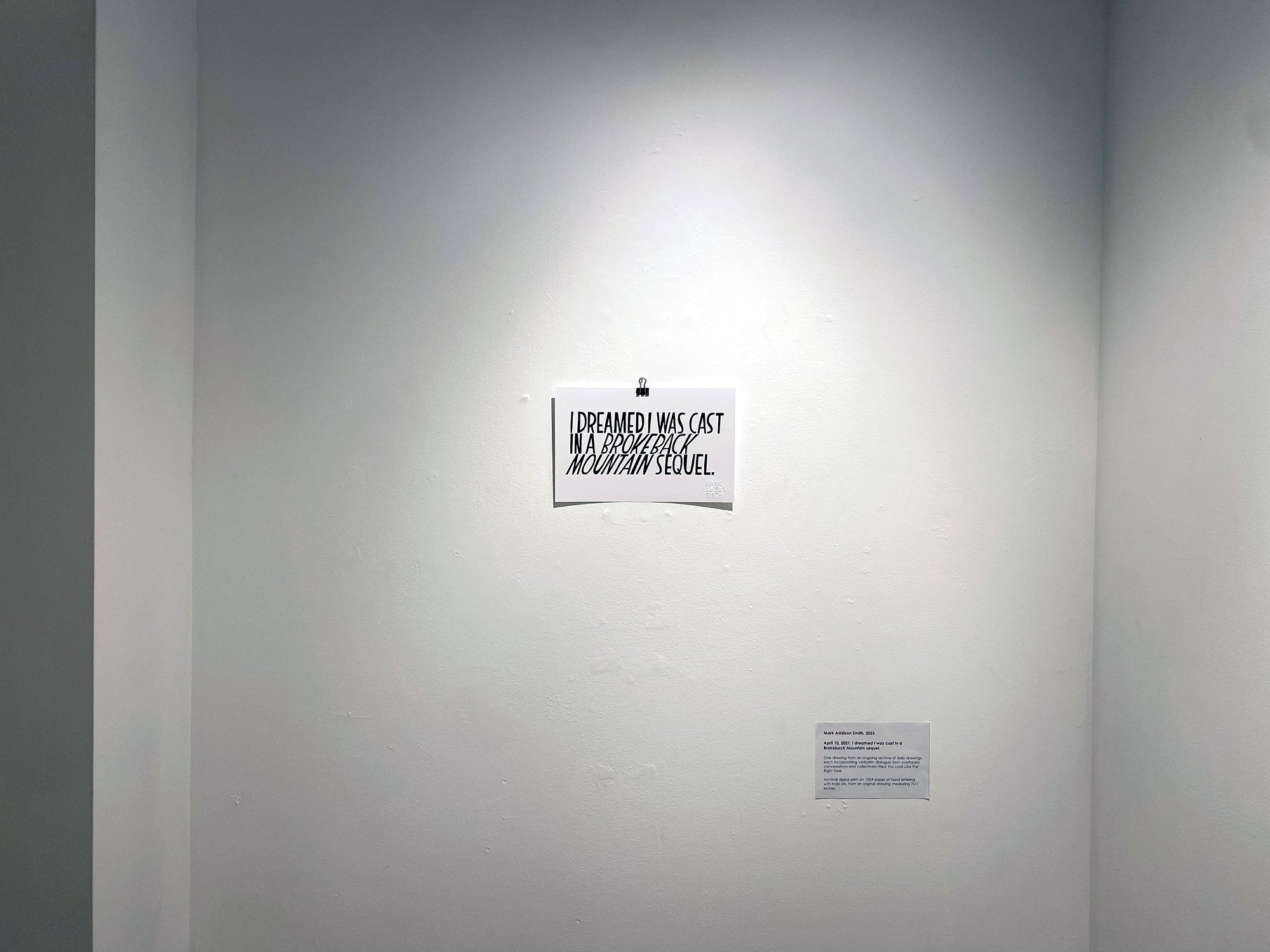
India ink pen on Bristol board, overheard and drawn on 4/10/21.

Four drawings, each India ink pen on Bristol board, overheard and drawn on four dates: 6/5/12, 7/27/19, 2/4/21, and 2/19/21.
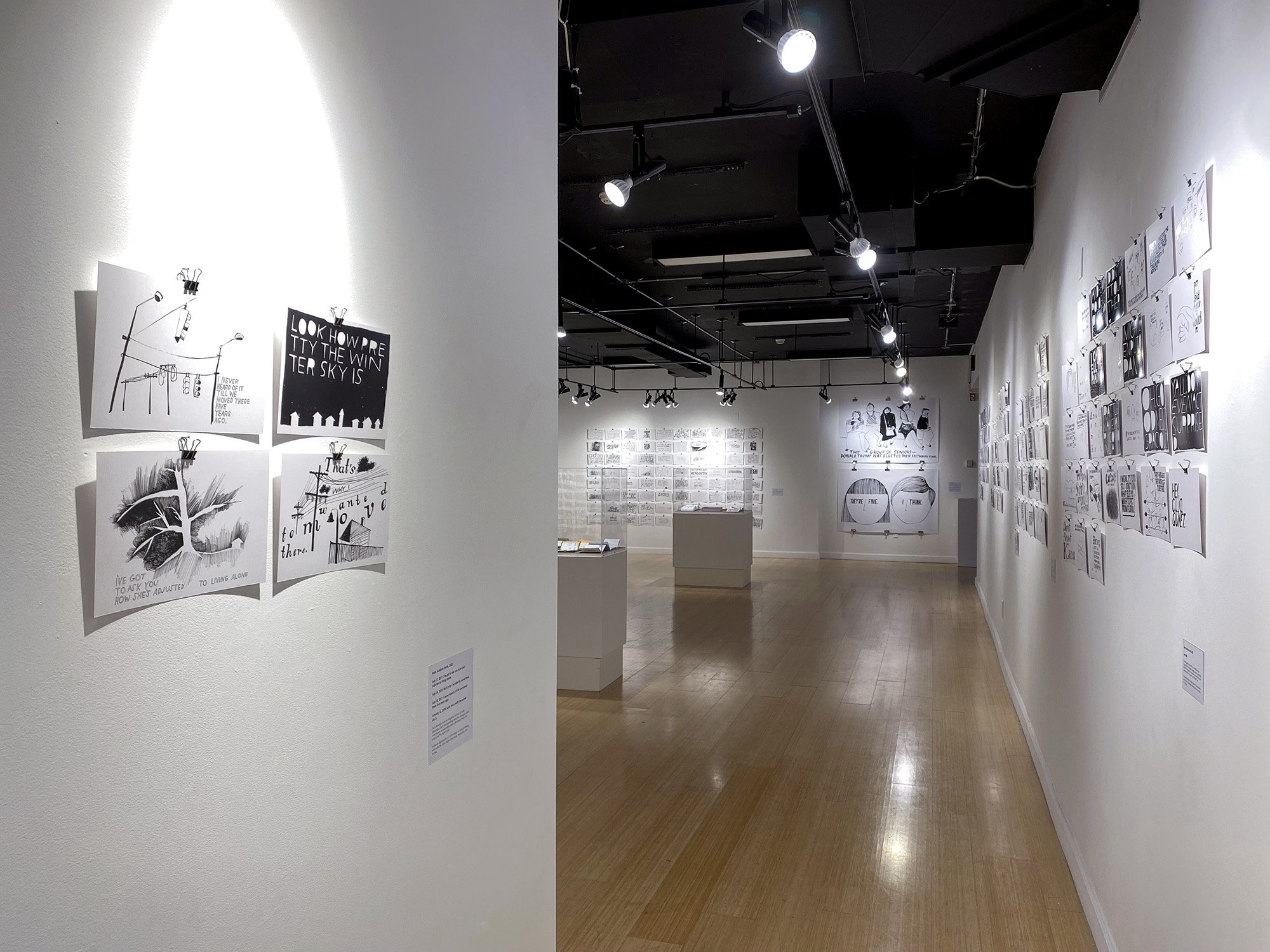
Four drawings, each India ink pen on Bristol board, overheard and drawn on four dates: 7/17/11, 7/18/11, 7/14/15, and 1/16/18.
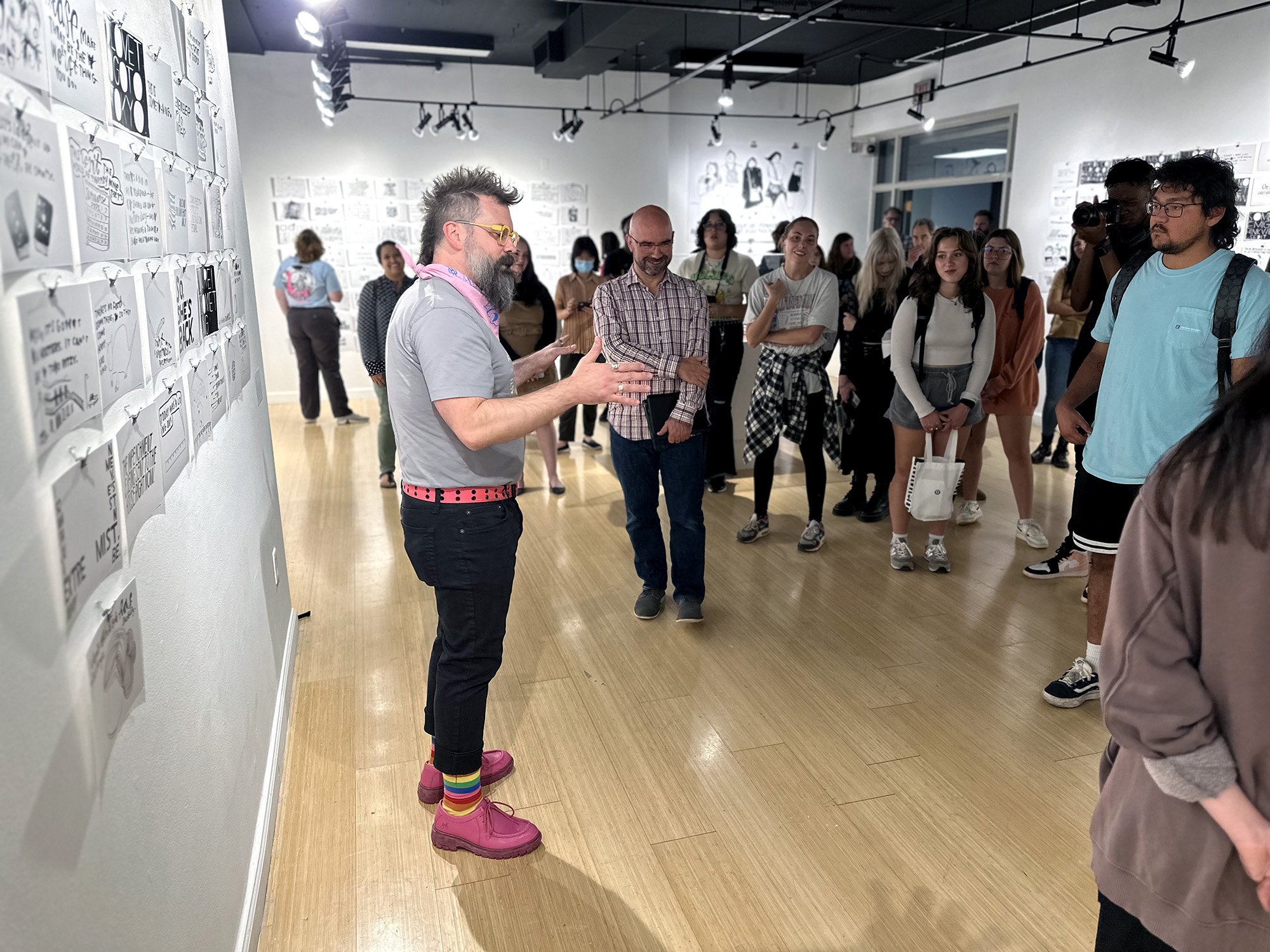
My artist’s talk took place in tandem with the opening night reception at McMaster Gallery.
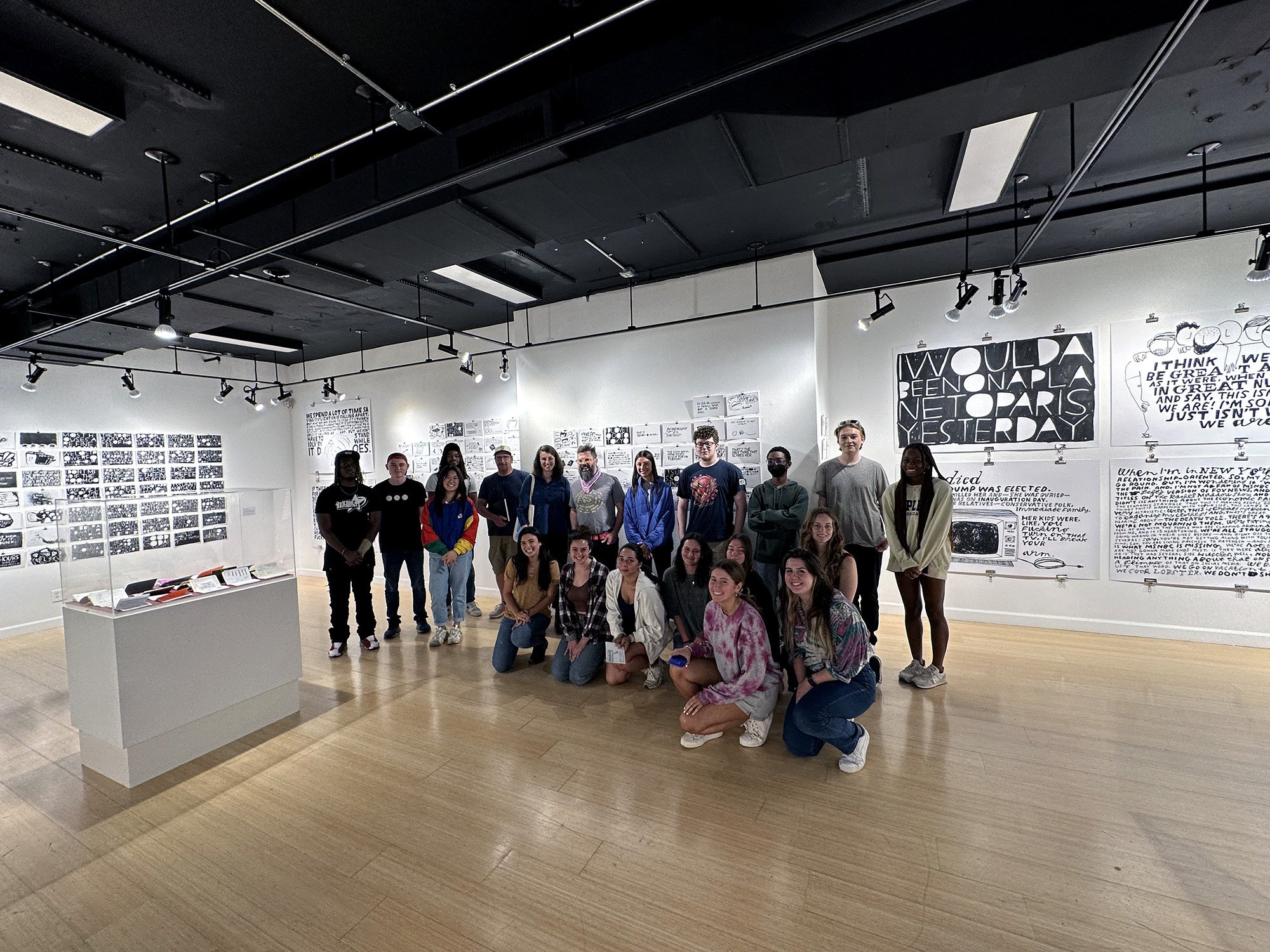
During the opening weekend, I gave a gallery tour of my work and answered questions for a University of South Carolina Illustration class. The class talk lasted around one hour and students had interesting questions about the overlap between design and illustration; the rubric I use when determining what to draw each day; the differences between drawing the everyday, or mundane, versus more politically-charged quotes; and how I edit together the final conversation clusters.
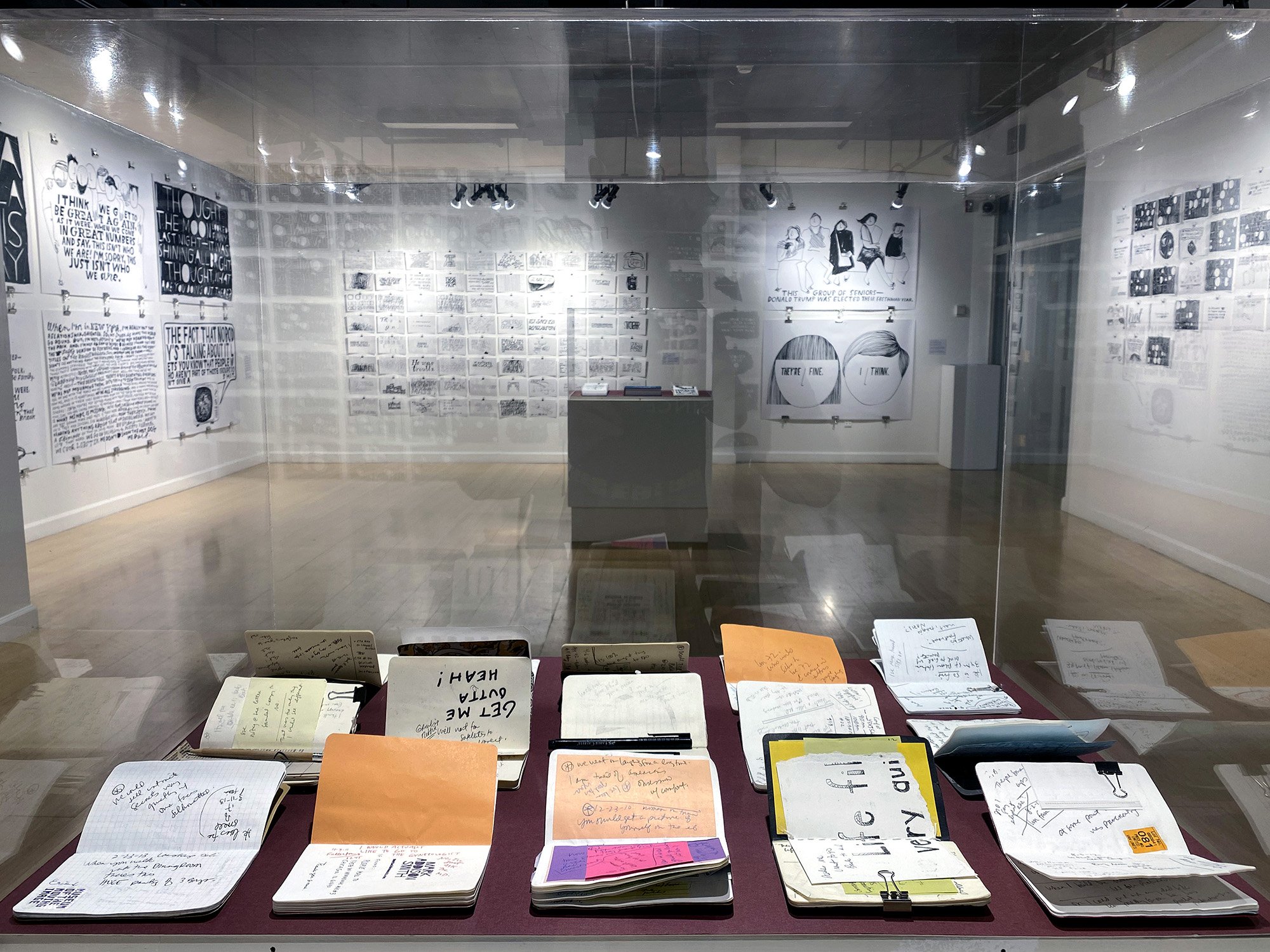
I carry tiny sketchbooks in my back pocket that I use to scribble down quotes I unexpectedly hear each day. Fifteen of my sketchbooks were on display in a vitrine to allow audience members to see some of the process behind my practice.
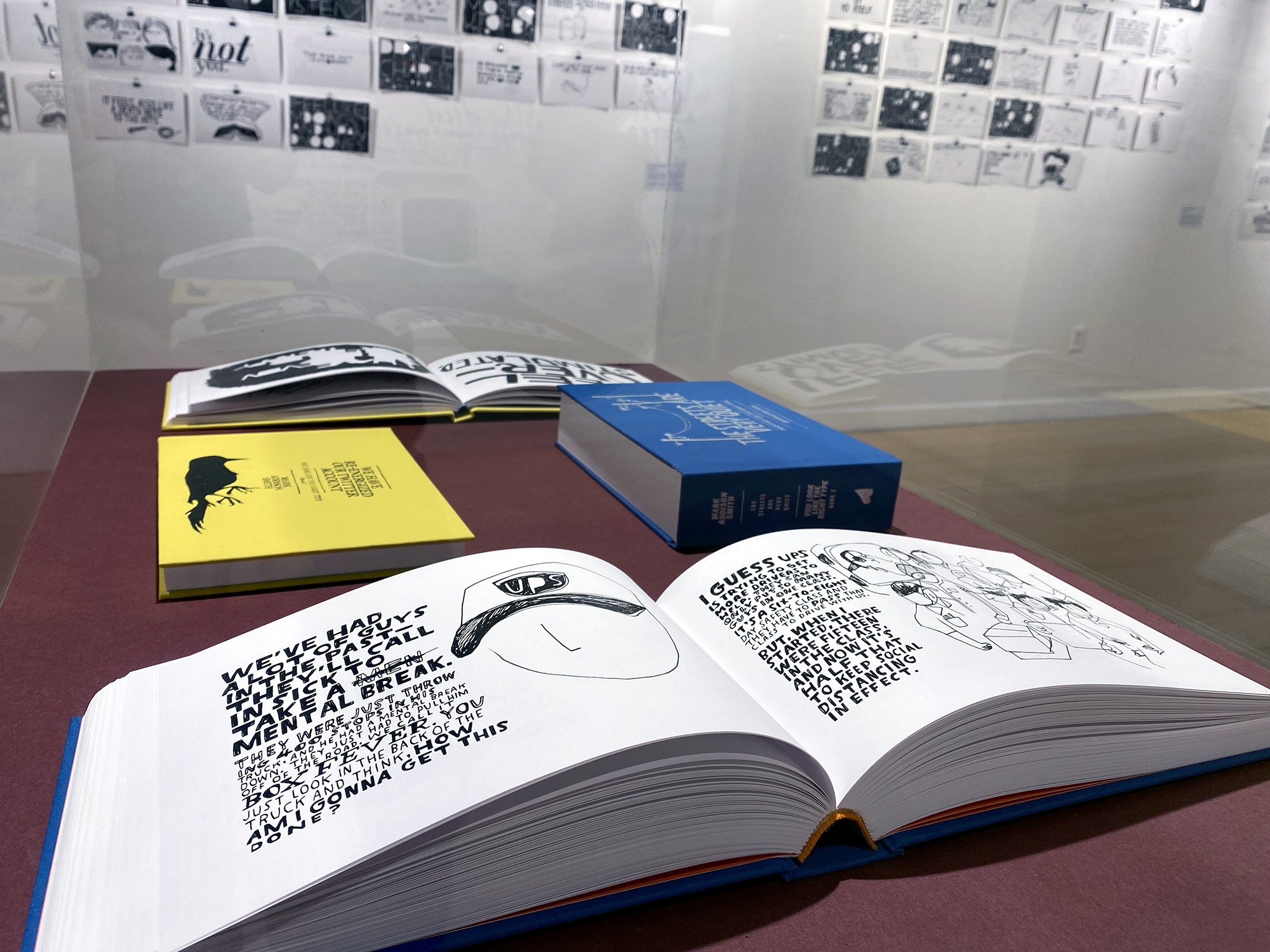
As a follow up to my You Look Like The Right Type pandemic drawings, generated during the early months of the COVID-19 lockdown, I printed an artist’s book with over 400 drawings (visual essays, or chapters, from 40 people), who spoke with me virtually during the pandemic. This artist’s book was printed in an edition of 150 copies and is currently held in over 25 museums and special collection library archives.
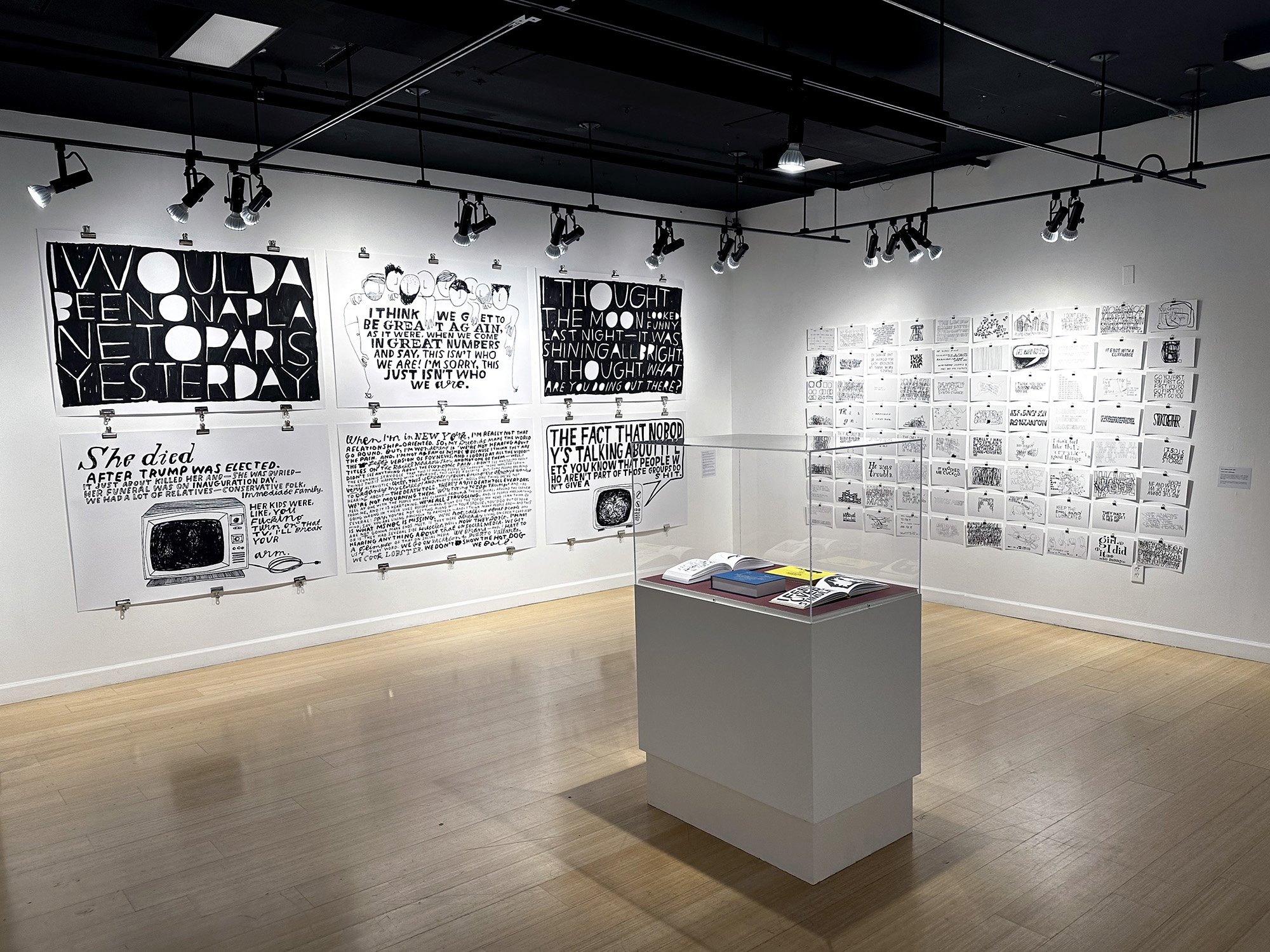
The smaller drawings, each measuring 7x11-inches, were offset by larger 40x60-inch drawings to provide a dynamic shift between the voices being exhibited. In the center of the gallery is one of two vitrines containing artist’s books. A second vitrine contained fifteen sketchbooks.
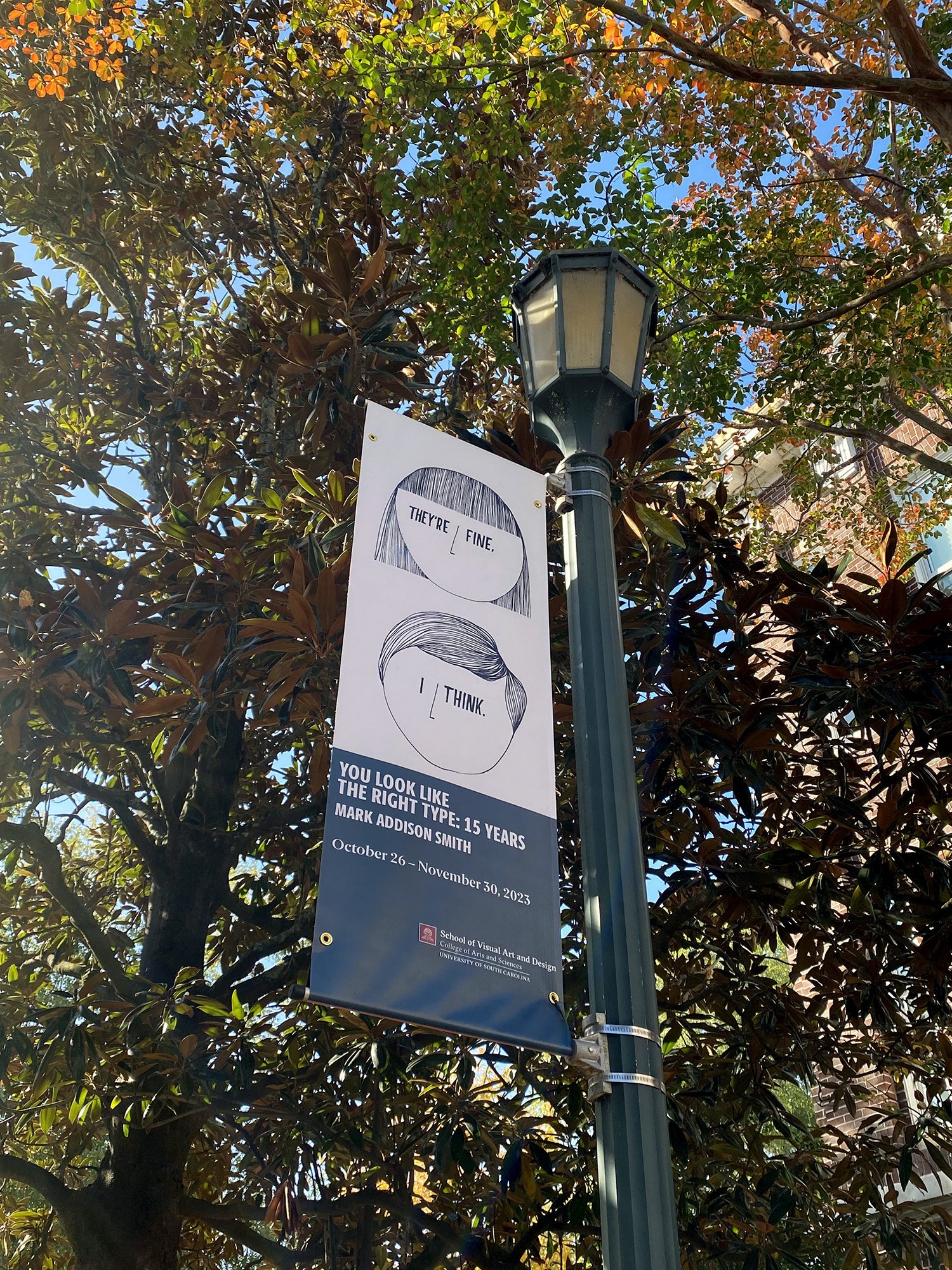
The University of South Carolina displayed banners throughout campus advertising my exhibition. I also printed 5x7-inch postcards, featuring similar art, as a promotional takeaway.





































